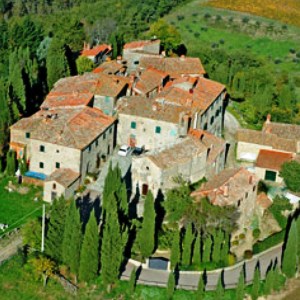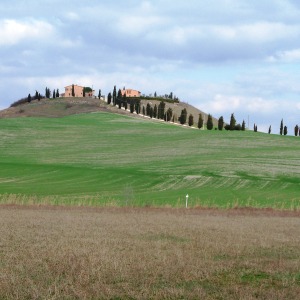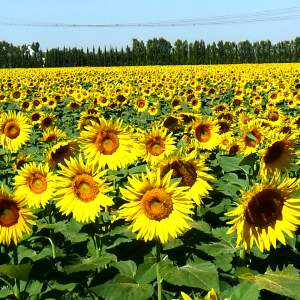Peace and quiet among vineyards and olive trees, this is the paradise of the Tuscan countryside
The Tuscan territory is hilly, In fact, almost 66% of the region has a distinctive landscape with rows of cypresses, olive trees and vineyards that affects the colors that change with the seasons. The Tuscan countryside is visited by thousands of tourists each year who seek relaxation, wellness and quality of life in an area with uncontaminated rural areas.
The numerous farmhouses in the Tuscan countryside are able to offer a wide range of services for those who want to fully enjoy a holiday in nature. You can only choose from the wide variety of rural areas in Tuscany which to live authentic experiences of contact with nature. Among these areas stand out the hills of Chianti, famous for growing grapes and producing great wines; the barren landscape of the Crete Senesi and the beautiful Val d’Orcia, a UNESCO World Heritage Site, with its clay soils and the typical rows of cypress trees; Garfagnana covered by wild forests and the Maremma with a large nature park.
There are plenty of activities that the Tuscan countryside offers tourists: from horseback riding, to the tasting of typical products of the Tuscan tradition accompanied by excellent local wines. In addition there are many farmhouses that offer cooking classes among others.
Surroundings Arezzo and Siena
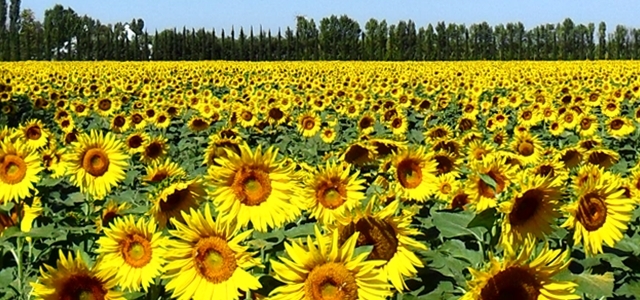 Sunflower field in Valdichiana (AR)
Sunflower field in Valdichiana (AR)
CASENTINO (province of Arezzo)
The Casentino area is one of the four main valleys of the province of Arezzo. The area looks like a large basin with flood plains, dotted with holiday resorts, ancient feudal castles Romanesque hermitages and monastic churches. The tourism potential of the Casentino is in the fact of presenting extensive wooded areas largely included in the Casentino National Park. Of particular interest are the Romanesque church of Romena Pratovecchio Stia, the sanctuary of La Verna, Franciscan complex, a place of prayer of St. Francis, the Monastery and the Hermitage of Camaldoli founded by St. Romuald and the sanctuary-monastery of Santa Maria del Sasso at Bibbiena.
Municipalities to visit
 BIBBIENA (AR) – hillside village
BIBBIENA (AR) – hillside village
Bibbiena has long been synonymous with theater, stage and costume design for the quality of cultural activities developed in these areas. The realization of Stage Design Museum then is unprecedented. In Bibbiena there is the important monastery-sanctuary of Santa Maria del Sasso.
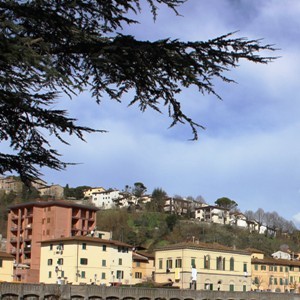 CAPOLONA (AR) – farming village
CAPOLONA (AR) – farming village
The municipality covers the southern foothills of Mount Pratomagno. It is a quiet village nestled in the green Tuscan countryside, at that point that the great poet Dante Alighieri called “… there where the Arno torches muzzle the Arezzo ….” Traces of the past are present in the ruins of castles, in towers and churches scattered in the surrounding area. for example, well preserved are the tower of Santa Flora, one of the box and that of Bibbiano. in recent years, tourism has risen sharply due to the presence of numerous farms located on the green hills of the area.
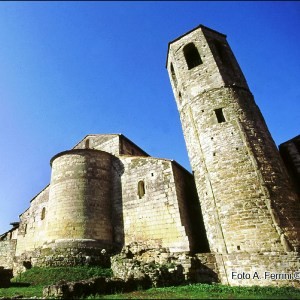 CASTEL FOCOGNANO (AR) – hillside village
CASTEL FOCOGNANO (AR) – hillside village
The municipality includes the town of Salutio, originally a castle, now a picturesque mountain village starting point for excursions to the mountain Pratomagno. To visit the Romanesque Pieve a Socana.
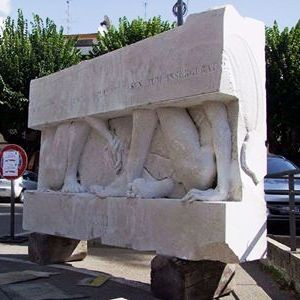 CASTEL SAN NICCOLO (AR) – hillside village
CASTEL SAN NICCOLO (AR) – hillside village
Under the name of Castel San Niccolò, derived from the most ancient fortification of the area, several villages are currently gathered. The administrative center is Strada in Casentino, while two other urban areas of importance are Cetica and Borgo alla Collina. Around these towns there are many other, even smaller, but they have carefully preserved the original medieval aspect, while here and there are castles, churches and old houses. For the rest of the territory is extensively wooded with a large presence of fir. From the town starts various paths towards the mountain Pratomagno, in a natural environment of great importance. To see the Pietra Lavorata museum.
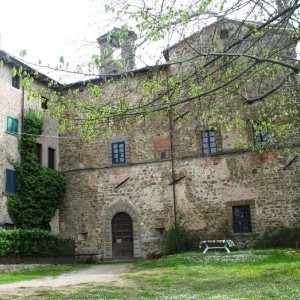 CHITIGNANO (AR) – hillside village
CHITIGNANO (AR) – hillside village
Chitignano is a small mountain village located along the road that leads to La Verna, the sanctuary of San Francesco. In the past, the town was the center of smuggling of tobacco and gunpowder. The territory is present sources of ferruginous thermal waters, very popular for health. Interesting to visit is the Museum of polvera by Fire.
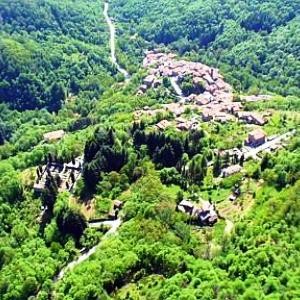 ORTIGNANO RAGGIOLO (AR) – hillside village
ORTIGNANO RAGGIOLO (AR) – hillside village
The district and the name were originated from the merger of the two towns of Ortignano and Raggiolo. In the villages you have preserved many old houses, with interesting architectural features such as arches of the doors carved with the subject rather diverse representations. In recent times the city have found a new possibility in the summer tourism development: the revenue allowed to restructure many of the old houses, some of which are often based directly on the spikes of rock.
 POPPI (AR) – medieval village
POPPI (AR) – medieval village
Prette village of medieval origin, is one of the rare “walled cities”, he remained almost intact in its artistic beauty. The old town is worth a careful examination, the architecture of the buildings, the picturesque neighborhoods with streets lined with arcades and narrow side lanes. Porta Fronzola, entry point of the town, now you can see, at the top, the Tower of the Devils, epilogue to the story of the Countess Matilda. The town is dominated by the Castle of Poppi, completely preserved in its original structure. The village of Poppi is an excellent vantage point around the northern Casentino: you can see the ridge of Pratomagno, the upper course of the River Arno and the large relief of the Apennines, Mount Falterona to the rocky spire of Verna. The territory of Poppi which also includes the complex of the monasteries of Camaldoli and Badia Prataglia that extend inside the Casentino National Park.
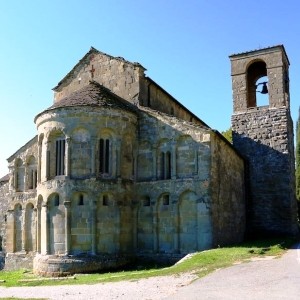 PRATOVECCHIO STIA (AR) – countryside villages
PRATOVECCHIO STIA (AR) – countryside villages
Pratovecchio and Stia are two locations that are fused in order to form the municipality of Pratovecchio Stia. Their history has always been linked to the beauty of the lush forests and the majesty of Mount Falterona and it is no coincidence that today it houses the Casentino National Park. The monuments in the area are diverse and interesting: the charming Romanesque church of Romena and the nearby Castle of the Counts Guidi.
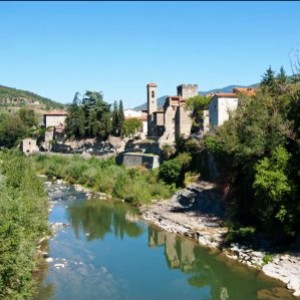 SUBBIANO (AR) – farming village
SUBBIANO (AR) – farming village
Is located to the left bank of the River Arno and its territory is the gateway to the Casentino, an area rich in history and nature, where they still remain the agricultural traditions and craft.
CHIANTI (provinces of Firenze, Arezzo, Siena)
Chianti is synonymous with good wine and gentle hills. Over time it has become one of the most popular tourist destinations for pristine landscapes, good food and medieval villages, castles, churches, monasteries and villas that are followed in a fantastic itinerary that highlights the hard work and the inventiveness of man. The Chianti area is spread between the provinces of Arezzo, Florence and Siena. The municipalities in this area constitutes almost the entirety of the Chianti wine producing area – DOCG red wine, one of the most famous wines in the world. In 1927 the Chianti Wine Association which today brings together more than 2,500 manufacturers.
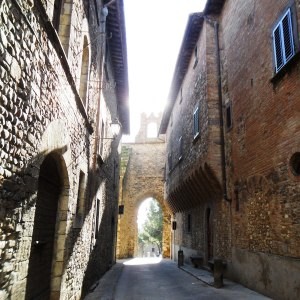 BARBERINO VAL D’ELSA (FI) – town country village
BARBERINO VAL D’ELSA (FI) – town country village
The district covers a hilly area dotted with vineyards, olive groves and ancient cypress trees, and crossed by the Via Cassia (SS2). Barberino Val d’Elsa is a charming town that has maintained the structure of the medieval village. The old town has a Shape “on time” and is crossed the entire length of the main road connecting the two gates, one Senese Romana, in stone with Gothic arch, and that Fiorentina. The distinctive feature of the area is the presence of numerous small medieval villages that overlook the hills around the capital. Although derived from the same historical and cultural matrix, these small towns are still different from each other, as well as offering little worlds all by scoprire.Chianti is synonymous with good wine and rolling hills. over time it has become one of the most popular tourist destinations for pristine landscapes, good food and medieval villages, castles, churches, monasteries and villas that are followed in a fantastic itinerary that enhances the industriousness and inventiveness of man. The Chianti area is spread between the provinces of Arezzo, Florence and Siena. the municipalities in this area constitutes almost the entirety of the Chianti wine producing area – DOCG red wine, one of the most famous wines in the world. In 1927 the Chianti Wine Association which today brings together more than 2,500 manufacturers.
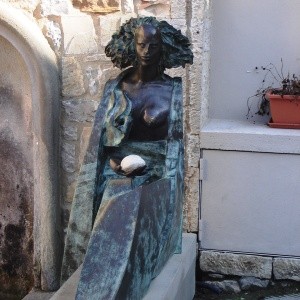 CASTELLINA IN CHIANTI (SI) – country town
CASTELLINA IN CHIANTI (SI) – country town
It is a medieval village perched in a panoramic position on a hill overlooking the valleys of Arbia, Pesa and Elsa at the border between the provinces of Siena and Florence, in the most central part of the Chianti area renowned for the production wine and oil. Village located between the territories of two rival cities, its history is inevitably peppered with anecdotes and legends that tell of the bitter disputes between Florence and Siena. In recent times, the old town has been completely restored, thanks to the tourism boom tied to the Chianti Classico Wine Road.
CASTELNUOVO BERARDENGA (SI) – hill town
(SI) – hill town
Castelnuovo Berardenga is a charming town located in the Chianti area, surrounded by many castles, fortified villages and historic villas. The city is part of the National Association of Wine Cities movement and the Slow Cities meaning – City of Good Living. Among the most important attractions of the area you enter the village of San Gusme, the Charterhouse of Pontignano, the castle of Montalto, the Villa Chigi Saracini, the Villa Arceno, the Arco Lane and the Church of Our Lady of Patronage among others.
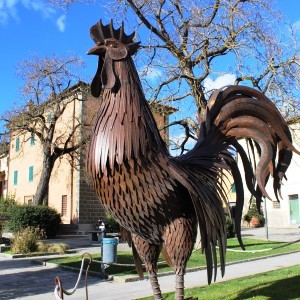 GAIOLE IN CHIANTI (SI) – wine-country town
GAIOLE IN CHIANTI (SI) – wine-country town
Land of woods and hills, vineyards and olive groves, Gaiole in Chianti is the cradle of handicrafts which have their roots in the distant past. The offer is rich and appreciated all over the world and goes by the ceramic art work, the manual weaving on ancient looms, from the production of iron objects, the realization of gift items. In the territory are scattered numerous small hamlets that still retain the ‘original medieval aspect, to signal the castles of Brolio, Meleto and Tornano. The whole area is characterized by a fine wine production, the Chianti Classico.
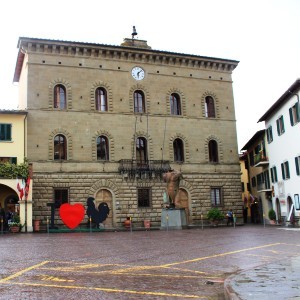 GREVE IN CHIANTI (FI) – wine country town
GREVE IN CHIANTI (FI) – wine country town
The Municipality of Greve in Chianti is a territory strongly marked by human presence, not only in the works of architecture, but also in the traditions that mark the territory for the note of oil and wine production. Since the Middle Ages the history of Greve has been linked to its main square that has always held the market place function due to its strategic location, situated at the point where they met the link roads between the Arno, Florence and Siena. Nearby there are various castles, well preserved, like the castle of Uzzano, Verrazzano, Mugnana and Sezzate, besides the village of Montefioralle in a landscape that has enchanted artists and writers.
 IMPRUNETA (FI) – pottery town
IMPRUNETA (FI) – pottery town
It is known for its centuries-old earthenware production, the so-called “cotto of Impruneta”. In addition, the town is known for the sanctuary of Santa Maria, a place of pilgrimage, and some major events such as the Wine Festival and the Feast of Saint Luke. No less important is the production of wine and oil in the hills surrounding the village.
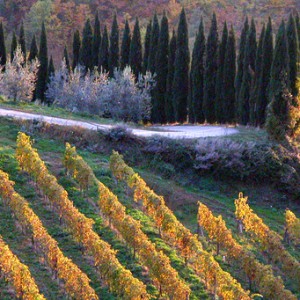 MONTEFIORALLE (municipality of Greve in Chianti – FI) – medieval village
MONTEFIORALLE (municipality of Greve in Chianti – FI) – medieval village
It is a village-castle, dating from the eleventh century. The village has a circular shape dominated by the church of Santo Stefano, which preserves inside a Madonna and Child of the Florentine school dating from the late thirteenth century. Ancient formwork today has remained a powerful rectangular plan structure that has a coating alberese stone. The urban fabric is presented with a very unified style, characterized by buildings with medieval structures. Among these buildings, there is a house believed to have been owned by the Florentine navigator Amerigo Vespucci.
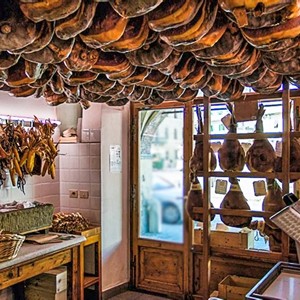 PANZANO IN CHIANTI (municipality of Greve in Chianti – FI) – rural medieval village
PANZANO IN CHIANTI (municipality of Greve in Chianti – FI) – rural medieval village
Panzano is a small village which is located along the Via Chiantigiana. Inhabited since Etruscan times, it is best known for its castle with a very simple structure. From the only gateway you reach a small square on which stands the keep, made up of a high tower that rises higher than all other buildings. All the castle structures can be traced to the eleventh century. Outside the castle, along the access road that follows the ridge of the hill, it is instead the village, divided into two roads that from a little square continue parallel to the castle. The village and castle currently form the so-called Panzano Alto. In Panzano you can admire one of the most important Romanesque-era churches in all of Chianti: the Pieve di San Leolino . Panzano is the famous butcher Dario Cecchini known as a poet and for its meat specialties.
 POGGIBONSI (SI) – agro-industrial town
POGGIBONSI (SI) – agro-industrial town
Since the Middle Ages, a time when it was a convenience store on the Via Francigena (or Romea), the town has always had a special commercial vocation, in particular economic exchanges through the Valdelsa. Not surprisingly, today the town is the capital of the Industrial District Alta Valdelsa. Close by are the Staggia Castle and the Castle of the Magione visited.
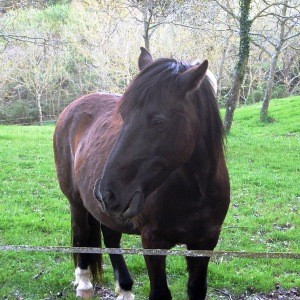 RADDA IN CHIANTI (SI) – wine-countryside village
RADDA IN CHIANTI (SI) – wine-countryside village
It is a pretty medieval village , enclosed by imposing walls elongated elliptical shape, which has preserved its original appearance, characterized by narrow streets that come out in the central square. Nearby there are also many villages, castles and churches, all of the Middle Ages, perfectly preserved, such as the villages of Badia a Montemuro and Volpaia. Currently Radda and its attractive surroundings have become a popular tourist destination for those who love good wine and nature. In town there are excellent restaurants and wine bars where you can taste all the typical products of the area.
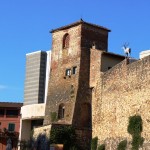 SAN CASCIANO IN VAL DI PESA (FI) – countryside village
SAN CASCIANO IN VAL DI PESA (FI) – countryside village
San Casciano in Val di Pesa is part of the Chianti Classico area and is a renowned center for the production of wines, extra virgin olive oil, and agricultural products in general. The San Casciano area is popular for the production of wines and olive oil. Among other outstanding wineries notes are located within the grounds of villas and castles like the Castle of Palagio di Gabbiano, Villa Antinori and Villa Le Corti. San Casciano in the area are present many farm located in areas rich in history and medieval buildings.
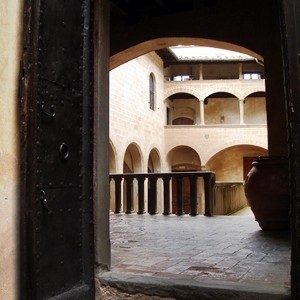 SAN DONATO IN POGGIO (municipality of Tavarnelle Val di Pesa- FI) – historic village
SAN DONATO IN POGGIO (municipality of Tavarnelle Val di Pesa- FI) – historic village
The village still retains considerable evidence of the thirteenth and 14th century, as the walls with two gates, the Malaspina palace of the Renaissance period, the Praetorian Palace, which houses some of the 14th century frescoes and the church of Santa Mary of the 15th century Snow. The old town has a series of winding streets surrounded by remarkable medieval architectural elements between which the tower-house called “bell tower” dating from the twelfth century. Outside the village there is the parish church of San Donato in Poggio, a notable example of Florentine Romanesque architecture (12th century).
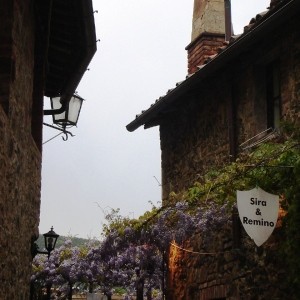 SAN GUSME’ (municipality of Castelnuovo Berardenga – SI) – countryside village
SAN GUSME’ (municipality of Castelnuovo Berardenga – SI) – countryside village
It is a small urban area that has preserved the ring of the original walls still almost completely intact. In the twelfth century it was a fief of the Ricasoli family. In the 15th and 16th century the village was occupied several times during military campaigns between Florence and Siena. The surrounding countryside is characterized by intensive cultivation of vineyards and olive groves. Just outside the village are the sources of the Ombrone river .
 TAVARNELLE VAL DI PESA (FI) – wine-growing town
TAVARNELLE VAL DI PESA (FI) – wine-growing town
Tavarnelle is located in the Chianti area known for producing fine wines the municipal area. Tavarnelle looks quite modern except along the main road where they present numerous palaces of the 17th and 18th century. To note the abbey, ancient monastery known for its wine production.
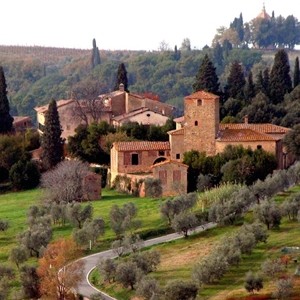 TIGNANO (municipality of Barberino Val d’Elsa – FI) – medieval village
TIGNANO (municipality of Barberino Val d’Elsa – FI) – medieval village
Located on a hill with sweeping views of the Valdesa, is one of the few completely walled villages remained unchanged over the centuries. Marked by circular plan, it is dominated by the castle, which is accessed via a steep ramp that leads to the Porta Fiorentina. This was defended by the formwork, a squat square mass. Inside the castle there is the Oratorio di Sant’Anna, dating back to the 16th century. In the town center stands the house-tower Tignano Alto. Inside the village there is the church of San Romolo, in Romanesque style and a rectangular plan. Inside a glazed terracotta tabernacle by Giovanni della Robbia.
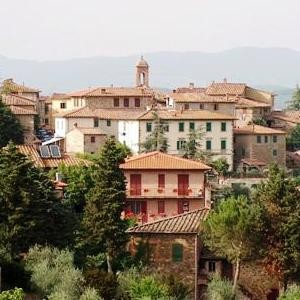 VAGLIAGLI (municipality of Castelnuovo Barardenga – SI) – countryside village
VAGLIAGLI (municipality of Castelnuovo Barardenga – SI) – countryside village
The name, rather curious, is a contraction of “Valley of the” to indicate that, in the area, there was plenty of wild garlic. It has retained an overall medieval appearance thanks to some historic buildings. These include the Church of St. Christopher, in Romanesque style, dating from the 13th century. In recent times it has become a tourist destination. In the village were shot some scenes of the film Five Moons Square and Letters to Juliet.
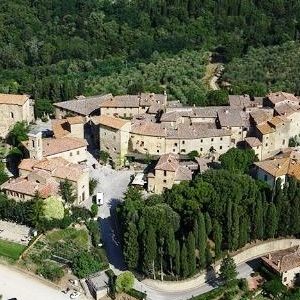 VOLPAIA (municipality of Radda in Chianti- SI) – countryside village
VOLPAIA (municipality of Radda in Chianti- SI) – countryside village
It is a small town that has a remarkable architectural harmony, and still preserves the structure of the fortified village. The most interesting architectural structures are the Castello di Volpaia and Commandery Sant’Eufrosino . During the 15th and 16th centuries the town became known for a number of scholars, artists and watch manufacturers , armillarie balls, compasses. This particular precision, typical of the period prior to Galileo Galilei, was developed by the family Della Volpaia, owner of the castle. Lorenzo di Volpaia, a friend of Leonardo da Vinci and often his adviser on technical matters, is known for having built, on behalf of the Medici family, the planetary clock that, at present, is located in the Palazzo Vecchio, Florence.
CRETE SENESI and VAL D'ORCIA (province of Siena)
The Crete Senesi area is one of the most controversial landscapes of Tuscany. Located south of the Province of Siena, it is characterized by a landscape that has eroded hills by time, harsh and bare but unchallenged beauty. The very special landscape is dominated by clay hills almost devoid of tall vegetation, cut by deep gullies and that alternate with stretches so form a landscape almost “moon.” In contrast, there are areas of cypress and pine trees that move the clay expanses, where flocks of sheep graze, whose milk is used to make the famous cheese. In fact, until today, the most valuable products of the area are: the cheese of the Crete Senesi and the white truffle.
The Valley Orcia is a wide valley that extends, in large part, in the province of Siena, and a small part, in the province of Grosseto. Crossed by the river Orcia, it is characterized by scenic landscapes with sweet and pleasant rolling hills, often adorned with distinctive rows of cypress trees and erosion, which lay bare the underlying clay layer of light color. For the beauty, history and nature was established Natural Artistic Park of Val d’Orcia, a world heritage site by UNESCO. The ancient Via Francigena, the medieval pilgrimage wheel to Rome, through the area. The current landscape is not much different from the one that fascinated the great painters of the Middle Ages or the Renaissance, European travelers of the “grand tour”, English writers, German and French, is a popular destination for tourism.
 ASCIANO (SI) – countryside village
ASCIANO (SI) – countryside village
The western and southern part of the municipal area is characterized by a succession of biancane and gullies that form a picturesque landscape. They are so-called “Crete Senesi”, an area that in the Middle Ages was called “Accona Desert”, by the almost lunar features. The current center of medieval origins, preserves valuable monuments. In the town of closures is the Abbey of Monte Oliveto Maggiore, a monastic seat of the Benedictine Congregation of Monte Oliveto. Located within a forest of cypresses, oaks and pines, it is one of the most important monuments of Tuscany for the historical aspect that the high number of art works preserved.
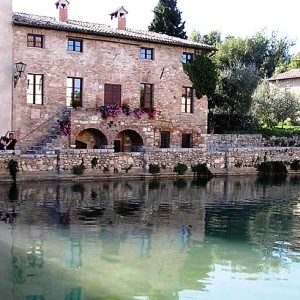 BAGNO VIGNONI (comune di San Quirico d’Orcia – SI) – spa town
BAGNO VIGNONI (comune di San Quirico d’Orcia – SI) – spa town
It is a small village with medieval features, immersed in a typical Tuscan landscape, located in the Natural Artistic Park of Val d’Orcia. The name comes from the thermal source and from Vignoni, famous castle in the XI century, whose ruins dominate the village from a hill. The resort is known for its thermal baths, known since the Etruscan and Roman eras, and the many outbuildings spas. The development of the village also helped the proximity of the Via Francigena. In the twelfth century the “bathroom” was subject to Tignosi family, lords of Tinkle. At the end of the next ownership of the village and the surrounding castles it was transferred to the Salimbeni family from Siena. In 1417 the castle was sold to Vignoni Siena. The baths were frequented by famous people such as Pope Pius II, St. Catherine of Siena, Lorenzo Medici, known as “The Magnificent”, to name only the best known. Despite numerous incidents of war, devastation and fires that involved the Val d’Orcia between the Middle Ages and the sixteenth century, the appearance of Bagno Vignoni has remained largely unchanged. Mill Park and Piazza delle Sorgenti.
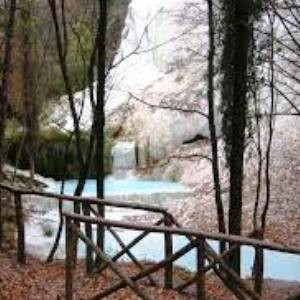 BAGNI DI SAN FILIPPO (comune di Castiglione d’Orcia – SI) – spa village
BAGNI DI SAN FILIPPO (comune di Castiglione d’Orcia – SI) – spa village
It is a small spa town that has developed due to the presence of sulfur waters with therapeutic properties have been known since ancient times. Near the village there is the so-called White Ditch, where the millennial passage of calcareous water left white concretions shaped waterfalls. Here is also the cave of St. Philip Benizi, dug into one large block of travertine and divided by a partition. Legend has it that, in 1267, the future saint took refuge in the cave to escape the election as pope and live as a hermit.
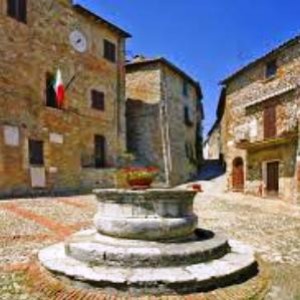 CASTIGLIONE D’ORCIA (SI) – hilly nature town
CASTIGLIONE D’ORCIA (SI) – hilly nature town
The territory is located in the center of Val d’Orcia and is mostly mountainous and hilly. The main village is spread over a hill which is part of the northern foothills of Mount Amiata. The clay geological formations, known as “crete” or “badlands,” they contrast with the green of forests. The area is part of the Artistic, Natural, Cultural Val d’Orcia, ranked by UNESCO World Heritage Site in 2004.
 CHIUSDINO (SI) – historical-religious village
CHIUSDINO (SI) – historical-religious village
It is a quaint village that still retains much of its medieval urban fabric. Located in the portion of the metalliferous hills of the Siena territory, the neighborhood inhabited by the Etruscans and then the Lombards. It was here that San Galgano, who was named the Abbey of San Galgano , a tourist destination mainly in summer when inside are organized musical concerts and the’ Hermitage of Montesiepe where there is the sword stuck in the rock.
 MONTALCINO (SI) – wine country town
MONTALCINO (SI) – wine country town
It is situated on top of a hill which offers excellent views of the surrounding valleys and, to the south, the farthest Monte Amiata. The town’s name derives from the Latin Mgr Ilcinus , referring to the great extension of forests of oak ( ilex ) in the area. Montalcino still keeps intact the medieval appearance of defensive origin, crossed by narrow, steep streets. From this period, even the walls that still keep the doors and some of the towers. The territory, which is part of the Artistic, Natural and Cultural Park of Val d’Orcia, is full of vineyards that produces wines of high quality as the famous Brunello. The town is also known for its qualified production of honey, extra virgin olive oil, cured meats and cheeses. In 2004 Montalcino and Val d’Orcia have been awarded “World Heritage”. To note the Sant’Antimo Abbey , the Glass Museum and the Museum of Brunello.
 MONTERONE D’ARBIA (SI) – countryside village
MONTERONE D’ARBIA (SI) – countryside village
The town is located among the most beautiful hills of southern Tuscany, close to the river Arbia. It has preserved the medieval atmosphere that still emanates from small churches, farmhouses and from farms, ancient mill, and other well-preserved architectural elements. It is an area of great landscape value.
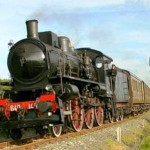 MONTISI (comune San Giovanni d’Asso – SI) – countryside village
MONTISI (comune San Giovanni d’Asso – SI) – countryside village
It is located on Mount Ghisi, from which the town takes its name. Despite its small size, the town preserves important monuments from medieval times. The feudal castle remains a part of the keep and a tower with a square plan. Near the village there is also a small Etruscan necropolis with a gabled tomb of the eighth century BC To visit the fortified farm Grange of Montisi, the parish church of the S.S. Annunziata and the Oratory of Sant’AntonioLa town is located among the most beautiful hills of southern Tuscany, close to the river Arbia. It has preserved the medieval atmosphere that still emanates from small churches, farmhouses and from farms, ancient mill, and other well-preserved architectural elements. It is an area of great landscape value.
 MONTICIANO (SI) – spa nature village
MONTICIANO (SI) – spa nature village
Nature is the key element of the territory, always sparsely populated. The remarkable biodiversity of the area has created the conditions for its preservation and protection. Are four nature reserves within the municipality: the Natural Reserve of Upper Merse , Natural Reserve of the Lower Merse , Natural Reserve of Farma and Biogenetic Reserve and Populating Animal and Plant to Tap . Striking is the town of Bagni di Petriolo with its outdoor hot tubs located within the protected area. Despite the presence of an efficient thermal establishment, the town retains the charm of a place out of this world.
 MURLO (SI) – hillside village
MURLO (SI) – hillside village
The territory, hilly and only with extensive forests of oaks, is between the valley of the river Merse and that of the Arbia river. Murlo is a land of Etruscan people. genetic tests carried out on the population and an in-depth comparative study on the DNA of the inhabitants “indigenous”, confirmed that these people directly descended from the Etruscans. Interesting comparisons were also among the faces, which showed amazing similarities between the facial features of some inhabitants with statues and Etruscan paintings. There is a likely explanation enough. For centuries, the territory remained outside from the roads and businesses, while avoiding invasions and sieges. In fact, the area has not undergone major changes and its present appearance is a true image of the past, while retaining in it traces of civilization that have succeeded. The village of Murlo counts today only 29 inhabitants and is, mostly, a tourist attraction because of the presence of the medieval walls and the rich archaeological museum.
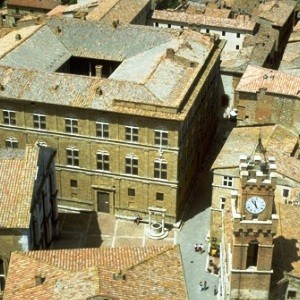 PIENZA (SI) – town of art and urban architecture
PIENZA (SI) – town of art and urban architecture
The history of the town is closely linked to that of Enea Silvio Piccolomini, born in the village and later became Pope Pius II. The pope wanted to transform the small medieval village called Corsignano Castle in the papal residence. The project was entrusted to Bernardo Gambarelli, called Rossellino. I’m testimonianaza many of the fifteenth century mansions located along the main street and the Cathedral. Pienza is the most famous center of major artistic importance of the Val d’Orcia. In 1996 the historic center was declared a World Heritage Site by UNESCO. Equally picturesque is the Gozzante district, the oldest part of the town, characterized by small houses located on the sandstone cliff and overlooking the Val d’Orcia (Orcia valley of the river). The area is also known for the production of excellent cheeses, first of all the pecorino.
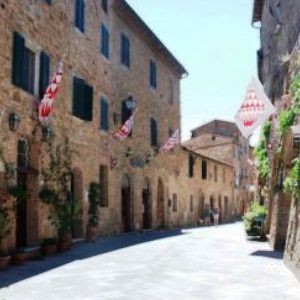 SAN GIOVANNI D’ASSO (SI) – countryside tows
SAN GIOVANNI D’ASSO (SI) – countryside tows
The town lies at the center of the area of so-called “Crete Senesi”, along the river Asso, from which it takes its name. It consists of two distinct areas, located on the same hill: the “high country”, oldest, located on top and contains the historic part and artistic-cultural of the town, and the “low country”, more modern and character residential. The area is famous for excellent quality white truffles and for its excellent wine production.
 SOVICILLE (SI)– hillside village
SOVICILLE (SI)– hillside village
Sovicille is a small town situated in the Sienese mountains rich in historical and cultural attractions, as well as the beauty of the natural setting in which it is inserted. Also reported were Montarrenti castles, Celsa and the ruins of the castle of Capraia. Picturesque is the Bridge of the Pious, which since Roman crossed the river Rosia, near the homonym village and of which there are many legends.
VALDARNO (province of Firenze and Arezzo)
The Valdarno area is the valley of the Arno river. It is divided into two distinct areas: upper Valdarno and Lower Valdarno between the provinces of Arezzo, Florence and Pisa. Along the Arno Valley (Valdarno), meet at more or less regular distances the small villages, dotted with towers, bell towers, churches and castles. The tourist has the opportunity to admire the multiple dwelling landscapes in the major tourist centers. While preserving a centuries-old agricultural tradition, especially devoted to oil production and high-quality wine, the Valdarno is considered one of the areas with a strong industrial expansion that has still managed to preserve natural and artistic heritage of the whole territory, in a perfect balance between nature and industry. To note the numerous shopping and outlet with favorable price of the most valuable brands of fashion and home objects.
The Valdarno is a valley between the provinces of Arezzo and Florence. The Arno river has dug its course, a long gorge called the Hell Valley . This area is very impressive from a naturalistic point of view. In the area dominated forests of conifers and beech trees, turkey oak and chestnut, and on the lower slopes are extensive vineyards and olive trees. Of note is the production of typical handmade artifacts in glass and wood.
The area of the Lower Valdarno consists of the territory crossed by the Arno river that comes to the mouth near Marina di Pisa, where it flows into the Tyrrhenian Sea, in the Province of Pisa. The main feature of the area is constituted by the substantial course of the Arno water, which makes it navigable throughout the year.
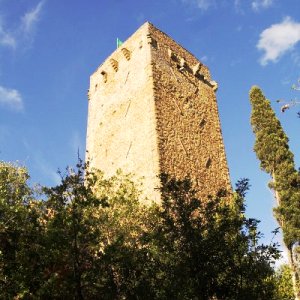 BUCINE (AR) – countryside village
BUCINE (AR) – countryside village
The town do Bucine is located along the stream Ambra, in the area called Valdambra (Val d’Ambra), and is considered a gateway to the Chianti area. The territory is in fact full of great vineyards and olive groves. The territory also includes several villages rich in history and architecture. The report Tower Galatrona that still watches over the whole area and the small village of San Leonino . For the characteristics of agro-food production Bucine is part of ” City National Association of Wine “and the movement of the good city life” Slow City “with a high level of quality of life due to climatic conditions and gastronomic Fartura. The area produces wines of good quality, well honey, fruits, vegetables, meats, cheeses and beef and pork in general.
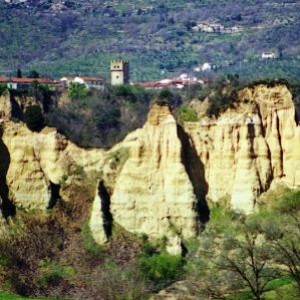 CASTELFRANCO PIANDISCO (AR) – hillside village
CASTELFRANCO PIANDISCO (AR) – hillside village
On the territory gravitate two main centers – Castelfranco di Sopra and Pian di Scò – located at the foot of Mount Pratomagno along the ancient route that linked Arezzo to Fiesole. The surrounding countryside is dotted with farmhouses, tower-houses, small villages and ruins of feudal castles, surrounded by olive groves and ordered agrarian settlements in terraces. To note the Alta Badia San Salvatore in Soffena with significant Gothic elements (Castelfranco di Sopra) and the Romanesque Church of Santa Maria di Pian di Scò . Another feature is the presence of the territory, near Faella, gullies or flounces reddish: in these erosion were discovered fossil remains, to confirm the ancient origins of the lake area.
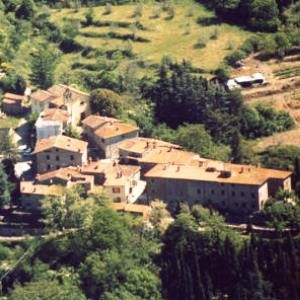 CASTIGLION FIBOCCHI (AR) – countryside village
CASTIGLION FIBOCCHI (AR) – countryside village
It is a village situated on the slopes of Pratomagno mountain that retains some vestiges of the medieval period, especially the town hall and St. Peter’s Church in Pezzano. Residential architecture in the context of considerable interest are the remains of two noble buildings, Cassi Villa and Villa Occhini. Along the Provincial Road 85 (or the “Seven Bridges”) you can see some examples of rural buildings in the area, in particular the typical houses with loggia on the ground floor, the porch on the first, the pigeon resting on the roof. Throughout the territory of Castiglion Fibocchi are widespread the agricultural food production, primarily that of wine.
 CAVRIGLIA (AR) – countryside town
CAVRIGLIA (AR) – countryside town
The town is located between hills where you can make routes on foot, by bike or on horseback along trails and dirt roads that allow you to visit the Cavriglia Nature Park , a protected area with forest animals in the wild in addition to practice bird . Of note is the rose garden botanical with a large variety of species well acclimatized rose between peacocks and other birds. There are numerous wineries with limited production of wine Chianti and some with significant production in quantitative and especially qualitative.

FUCECCHIO (FI) – countryside town
The district is located on the right bank of the Arno River on the border with the provinces of Lucca, Pisa and Pistoia in a wetland near the Padule , the nature reserve of national importance. The town extends partly located on a hill, already in ancient times, has taken the name of “Poggio Salamartano”, and, for the most part, in the flat area which is located on the slopes. Inserted in the so-called Leather District , is currently the name of Fucecchio is known for the production of leather and footwear.
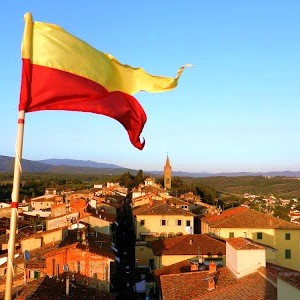 LATERINA (AR) – countryside village
LATERINA (AR) – countryside village
The town’s name derives from the Latin later or lateris , which means “brick factory”. In full harmony with the clayey nature of the soil and the uninterrupted presence, to this day, in the home, there are still many furnaces. Laterina is also known for playing the ancient chariots like rams that are performed during the Medieval Festival.
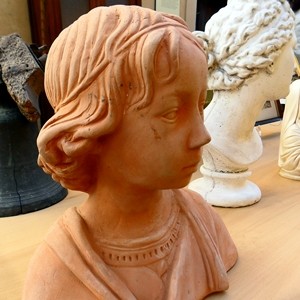 MONTELUPO FIORENTINO (FI) – pottery town
MONTELUPO FIORENTINO (FI) – pottery town
The village is situated on top of a hill overlooking the surrounding landscape of olive groves and vineyards. Since ancient times, the area was an important crossroads for the communications towards Florence and the Apennines on the one hand, the Tyrrhenian Sea on the other. The location and the presence of important waterways navigable at the time – the Arno river and the Pesa torrent – contributed to the development of numerous manufacturing activities. Among these, especially that of the ceramic, which in Montelupo reached development and notoriety between the fifteenth and sixteenth century. The work continues today in many pottery workshops Artistic and celebrates each year the pomp during the International Festival of Ceramics.
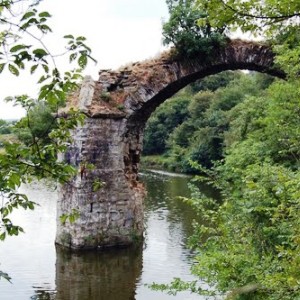 PERGINE VALDARNO (AR) – countryside village
PERGINE VALDARNO (AR) – countryside village
The territory of Pergine Valdarno is characterized by the typical landscape of the interior rural Tuscany, with woods in the highest part of the hills and the cultivation of vines and olive trees. The area has produced one of the finest olive oils . Besides the traditional agricultural economy it has also developed a craft and industrial fabric in the gold sector, and precision mechanics. From the point of view of cultural history, the area is located the remains of the old bridge Romito , which seems certain is the one painted by Leonardo Da Vinci in the most famous painting, the ‘Mona Lisa’. The bridge is inserted within the Nature reserve Bandella also known as the Valley of Hell. This is a marsh area that includes woods and a very interesting wildlife.
 REGGELLO (FI) – countryside village
REGGELLO (FI) – countryside village
Much of the municipal area is characterized by hills terraced crops treated with vineyards and olive groves, present since the fourteenth century. The major attractions of the area are the imposing Vallombrosa Abbey , rich in history and works of art, the Circuit of Capelle , picturesque route in the homonymous forest and Castle Sammezzano . Worthy of mention are the two nature reserves with numerous hiking trails: the Natural Protected Area of Anthony Forest and Biogenergetica Reserve of Vallombrosa wood . Still in the territory ‘s The Mall outlet with best deals of attires of great brands and many farms that produce the prized extra virgin olive Regello Toscano PGI. The tourist accommodation has a varied range: from small B & amp; B to the numerous and well-equipped farms, up to the hotel facilities.
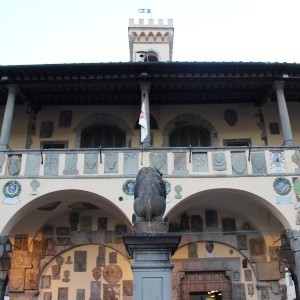 SAN GIOVANNI VALDARNO (AR) – agro-industrial town
SAN GIOVANNI VALDARNO (AR) – agro-industrial town
Located about halfway between Florence and Arezzo, it is one of the main industrial centers of high Arno (Valdarno river valley) surrounded by the beautiful hills of Chianti and the Pratomagno mountain ridge. The old town, town planning project developed in the thirteenth century by the architect Arnolfo di Cambio, has kept the medieval village structure: small roads, including the characteristic “lanes”, almost devoid of sunshine, and the sudden opening on the central squares , one of which is dedicated to Masaccio, the great painter born in the town. The House-Museum where lived Masaccio is either open to visitation.
VALDICHIANA (provincia Arezzo and Siena)
The Valdichiana (or Val di Chiana) is a long valley about 100 km, which is included in the provinces of Arezzo and Siena in Tuscany. The landscape is hilly. Spa, nature and culture, are the main ingredients of the area. The area offers sights of historical interest, as well as many farmhouses, where they are carried out various kinds of activities: educational, sports, rural, cultural or recreational. Very important are the thermal baths of Chianciano known since the Etruscans and the baths of Montepulciano with modern spas targeted to wellness. There are numerous opportunities to spend days outdoors moving on foot (trekking), horse (hippo-trekking) and mountain biking.
 CIVITELLA IN VAL DI CHIANA (AR) – agricultural village
CIVITELLA IN VAL DI CHIANA (AR) – agricultural village
Civitella is a village that keeps almost intact the elliptical path of the medieval walls interspersed with square towers, and where is located the door of access fortified, commonly known as “Aretina”. The area is known for its breeding of Chianina cattle breed, which produces meat of excellent quality. Civitella in Val di China is also part of the list of “Slow City” or the good life, due to the high level of environmental quality.
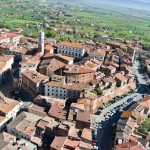 FOIANO DELLA CHIANA (AR) – cittadina – countryside village
FOIANO DELLA CHIANA (AR) – cittadina – countryside village
It is a bustling agricultural and commercial center (cereals, wine, tobacco) and . Nearby is the Valdichiana Outlet Village with shops of the most prestigious brands at a good price.
 MARCIANO DELLA CHIANA (AR) – hilly village
MARCIANO DELLA CHIANA (AR) – hilly village
Marciano is a small hillside village in the Val di Chiana area characterized by large agricultural centers that produce various types of cereals, as well as wine and olive oil. The castle tower dominates the landscape where the famous captain of fortune Bartolomeo Fanfulla lived. The village is located close to major centers such as Cortona and Lucignano.
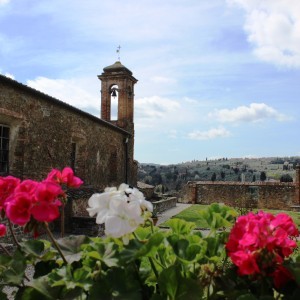 MONTE SAN SAVINO (AR) – countryside town
MONTE SAN SAVINO (AR) – countryside town
Monte San Savino is a medieval-Renaissance village. But it is also known for its pottery that skilled craftsmen forge a daily basis in their workshops, using ancient techniques handed down from generation to generation. A strong point of Monte San Savino is the gastronomy, where you can eat the traditional roast pork with herbs and drinking fine wines.
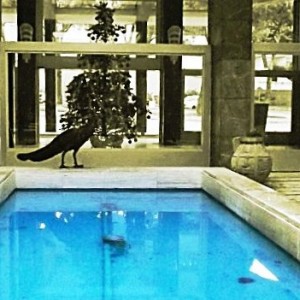 CHIANCIANO TERME (SI) – thermal village
CHIANCIANO TERME (SI) – thermal village
Chianciano is traditionally a place of wellness spa. Since the Etruscan and Roman eras have been exploited the benefits of the waters that flow abundantly in the area. The town is surrounded by wooded hills of oaks, beeches, oaks and chestnut trees, and immersed in a healthy and unpolluted environment. Chianciano Terme has a significant amount of green areas in the spa parks, public gardens, villas and cozy hotels.
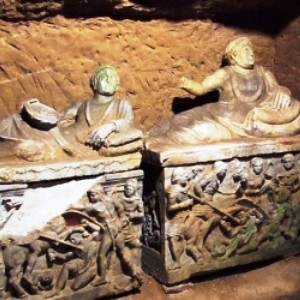 CHIUSI (SI) – Countryside Etruscan village
CHIUSI (SI) – Countryside Etruscan village
Chiusi was one of the most important Etruscan cities. The city had a leading role among other Etruscan cities, and in a moment of its history, even threatened Rome. Of this glorious period are numerous tracks throughout the territory (graves) and a rich collection of exhibits in the great museum of the town.
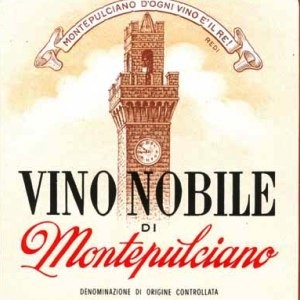 MONTEPULCIANO (SI) – countryside wine village
MONTEPULCIANO (SI) – countryside wine village
The town has preserved the medieval features S-shaped and is surrounded by three circles of walls, built in the 14th century. The small rural settlements coexist with towns full of historical memories and remarkable works of art in a harmonious agricultural landscape. The territory of Montepulciano is known for its abundance of vineyards, whose grapes are skillfully transformed into Vino Nobile di Montepulciano DOCG. The major production activities are concentrated on the local excellence sectors: wine-making, agriculture, tourism.
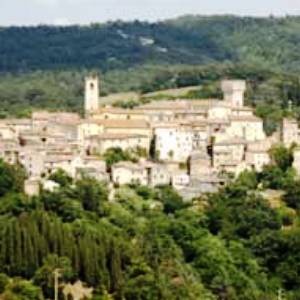 SAN CASCIANO DEI BAGNI (SI) – thermal village
SAN CASCIANO DEI BAGNI (SI) – thermal village
The history and development of the town are essentially linked to the presence of thermal waters, well 42 springs with an average temperature of 40 ° C. The most important and impressive is the mass of water that flows in the territory: the total flow of the springs reaches 5.5 million cubic meters. The thermal waters have therapeutic properties. Most important is the Fonteverde Spa.
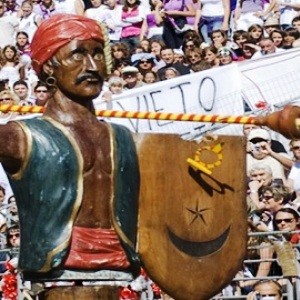 SARTEANO (SI) – hilly village
SARTEANO (SI) – hilly village
Sarteano is located on the mountains that separate the Val di Chiana from the Val d’Orcia, one of the most picturesque areas of southern Tuscany. It is also a valuable area from the historical point of view (Etruscan civilization) and naturalistic. The town is dominated by the castle with the green background of Mount Cetona. Sarteano economy is diverse, but basically is based on agriculture – oil, wine and wheat – and tourism.
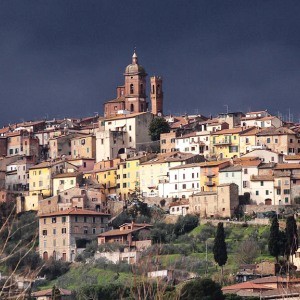 SINALUNGA (SI) – hilly village
SINALUNGA (SI) – hilly village
The Sinalunga area consists of a collection of small villages, some of which are medieval. The signals of the medieval period are visible everywhere, despite the damage done to the armed confrontation between Siena and Florence. Most of the religious buildings contain valuable works of art.
T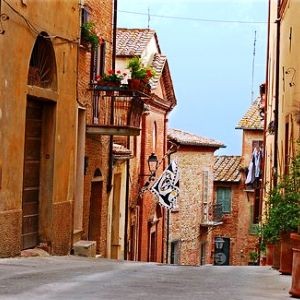 ORRITA DI SIENA (SI) – countryside village
ORRITA DI SIENA (SI) – countryside village
The churches of the town house precious works of art. The town is home to one of the oldest horse races and opened the door to one of the most modern musical style, the blues.
 TREQUANDA (SI) – countryside village
TREQUANDA (SI) – countryside village
It is a pleasant village situated among vineyards, olive groves and forests that together make up the typical Tuscan countryside. The village is situated in the area with typical ocher soil, mostly clay. Isolated or in rows along farm roads, cypress trees are characteristic of the area. In the area there are picturesque well-preserved medieval towns including Petroio, where they are produced handmade pottery.
VALTIBERINA (provincia Arezzo)
Valtiberina or called the Upper Tiber Valley, is a valley located in the eastern part of Tuscany in the province of Arezzo. The area is crossed by the Tiber river. It is a hilly territory, characterized by the presence of dense forests, especially chestnut, alternating with large pastures. There are intact walled towns like Anghiari or river centers such as Pieve Santo Stefano that preserve medieval buildings, as well Camaldolese abbeys and Franciscan monasteries that tell the history of this area. Important artists were born in the area, including Michelangelo and Piero della Francesca. The territory of the Tiber Valley is known for wine and food products such as sausages and wine.
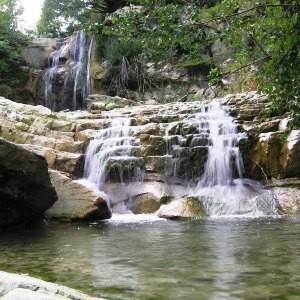 BADIA TEDALDA (AR) – hilly village
BADIA TEDALDA (AR) – hilly village
Il borgo si trova al confine tra tre regioni: Toscana, Romagna e Marche. Inoltre è collocato lungo la via Francigena (o Romea) che pellegrini, monaci, abati hanno percorso per molti secoli. Il paesaggio fa da cornice al villaggio, che è un punto di partenza per passeggiate a piedi o a cavallo, alla scoperta di un interessante patrimonio naturalistico. Nei dintorni ci sono la Riserva naturale Alpe della Luna con area destinata a pesca sportiva e l’Area protetta Nuclei a Taxus in località Pratieghi, un bosco di oltre 60 ettari dove vivono piante di tasso di notevole età e dimensioni.
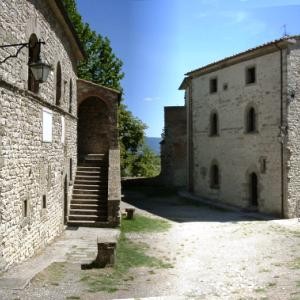 CAPRESE MICHELANGELO (AR) – villaggio storico
CAPRESE MICHELANGELO (AR) – villaggio storico
Il territorio comunale si trova nell’area più verde del percorso del fiume Tevere in Toscana (Valtiberina). Numerosi altri corsi d’acqua attraversano il territorio per confluire nel torrente Singerna, che si unisce poi al Tevere nel lago di Montedoglio. Boschi di faggi, di querce e di castagni ricoprono buona parte della zona, mentre funghi, tartufi, more, fragole e lamponi sono i frutti spontanei di questa terra, che conserva ancora genuini ed incontaminati scenari. A Caprese, nel 1475, nacque Michelangelo Buonarroti, scultore e pittore di fama immortale.
 MONTERCHI (AR) – villaggio storico di campagna
MONTERCHI (AR) – villaggio storico di campagna
La cittadina è un tipico borgo di chiara impronta medievale, arroccato su una collina isolata, denominata in passato Mons Herculis (Monte di Ercole) che sovrasta l’alta Valtiberina (valle del fiume Tevere). Secondo la leggenda, il semidio Ercole avrebbe fondato Monterchi dopo aver sconfitto la mostruosa Idra, evento che campeggia nello stemma comunale. La cittadina è nota per il celebre affresco di Piero della Francesca con la Madonna gravida – Madonna del parto (1455).
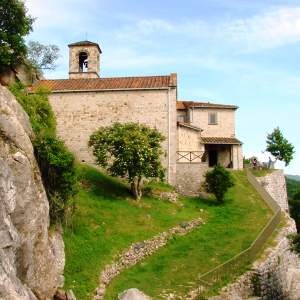 PIEVE SANTO STEFANO (AR) – villaggio naturalistico di campagna
PIEVE SANTO STEFANO (AR) – villaggio naturalistico di campagna
Situata in una valle circondata da monti al confine tra la regione Toscana, Umbria e Romagna, Pieve Santo Stefano offre opportunità di turismo ecologico, una volta che il territorio conserva varie riserve naturale con fauna e flora di considerabile importanza. Sono proposti vari percorsi trekking in sentieri che permettono di raggiungere punti suggestivi e panoramici quali il Passo delle Gualanciole e la Vallesanta. Oltre l’abitato è diventato conosciuto come la “città del diario”. Questa fama si deve al fatto dalla conservazione di una raccolta di scritti di persone comune, testimonianze, lettere d’amore, diari di giovanni che riflettano, in varie forme, la vita della popolazione in epoche passate.
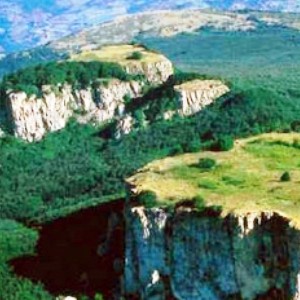 SESTINO (AR) – villaggio naturalistico collinare
SESTINO (AR) – villaggio naturalistico collinare
Si trova ai confini con le regioni Emilia-Romagna e Marche. Nei dintorni si trovano antichi agglomerati urbani che conservano memorie storiche ed artistiche in un ambiente di notevole interesse naturalistico e praticamente incontaminato. Tra questi, Monterone, San Donato, Colcellato e Case Barboni sono i villaggi più significativi. Significativo è Sasso Simone, un enorme blocco di roccia calcarea ricco di fossili che si erge come un parallelepipedo regolare sul crinale dell’Appennino Toscano, raggiungendo l’altezza di 1204 metri. Attualmente è incluso nella Riserva Naturale del Sasso di Simone, i cui boschi sono costituiti essenzialmente da alberi di cerro e di faggio e che ospita una fauna particolarmente variegata, con abbondanza di piccoli mammiferi, animali selvatici e numerose specie di uccelli. Numerosi sentieri percorrono a riserva.
Surroundings Firenze, Prato and Pistoia
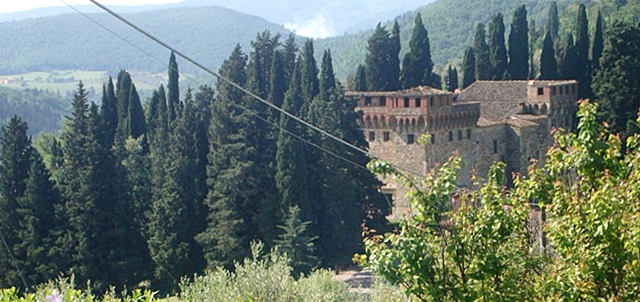 Trebbio Castle – Mugello (FI)
Trebbio Castle – Mugello (FI)
MUGELLO (province of Firenze)
Il Mugello è’ una vallata che corrisponde al corso del fiume Sieve in Provincia di Firenze. Il paesaggio del Mugello è caratterizzato da una ampia cintura di monti e colline che degradano fino all’area pianeggiante adiacente il corso del fiume Sieve, dove ci sono numerosi centri abitati. Comprende quattro complessi forestali. Sono frequenti gli avvistamenti di daini, caprioli, cinghiali ma anche di lupi così come dell’aquila. La zona è estesamente coltivata, oltre a olivi e viti vengono coltivati anche grano e foraggi. Molto apprezzata è la produzione di prodotti tipici di nicchia e biologici.
 BARBERINO DI MUGELLO (FI) – cittadina agro-industriale
BARBERINO DI MUGELLO (FI) – cittadina agro-industriale
A Barberino di Mugello si può visitare inoltre numerose chiese e pievi risalenti al periodo Trecentesco, il Castello di Villanova (detto anche Villa delle Maschere) e il Loggiato Mediceo dell’architetto rinascimentale Michelozzo, che al tempo veniva utilizzato come mercato coperto. Vicino alc entro di Barberino, in località Cafaggiolo, si trova la villa medicea di Cafaggiolo, che fu fatta edificare dalla famiglia Medici come residenza di campagna e che conserva ancora oggi numerosi arredi originali del periodo dei Medici. Nella zona sono presenti numerosi sentieri nel bosco lungo il percorso del torrente Stura dove si può avvistare animali selvaggi quali volpi, conghiali, lepri e daini. Barberino di Mugello si affascia al Lago di Bilancio, luogo ideale per villeggiatura.
 DICOMANO (FI) – cittadina di campagna
DICOMANO (FI) – cittadina di campagna
Dicomano è collocato alla base dei rilievi dell’Appennino Tosco-Emiliano. Il territorio è solcato da corsi d’acqua e ricco di boschi di castagni, cerri o faggi. Per la sua felice ubicazione, snodo di strade verso Firenze, il Casentino, il Mugello e la Romagna, ha da sempre rappresentato un punto d’incontro e di scambio tra esperienze e tradizioni diverse, oltre ad essere un’importante nodo commerciale. Il centro storico ha vie eleganti, con loggiati intercomunicanti con archi su pilastri quadrangolari risalenti al XVII° secolo. Il territorio è ricco di numerosi percorsi naturalistici.
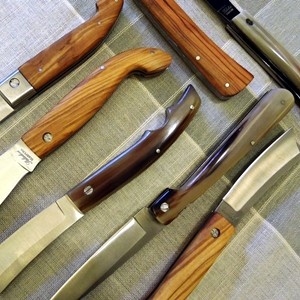 SCARPERIA (FI) – (comune di Scarperia San Piero ) – cittadina di campagna
SCARPERIA (FI) – (comune di Scarperia San Piero ) – cittadina di campagna
Scarperia è nota per la produzione artigianale di coltelli. Infatti questa tradizione è vecchia di almeno cinque secoli. Fino al XVIII° secolo la presenza degli artigiani del settore era numerosa e vastissima la produzione di ferri taglienti, sia per usi bellici (pugnali, lance e spade), che per la casa ed il lavoro (forchette e punteruoli, roncole, cesoie e temperini). Attualmente sono attive solo quattro imprese, con una ricca produzione di coltelli di tutti i generi: da quelli da caccia a quelli da macellaio, dalla coltelleria da cucina a completi di posate con il manico di corno, oltre a tutti i tipi di forbici e pennati di tutte le dimensioni.
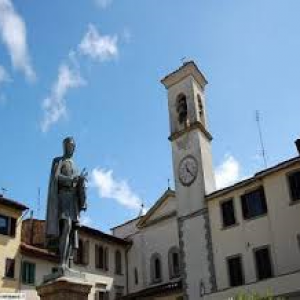 VICCHIO (FI) – cittadina di campagna
VICCHIO (FI) – cittadina di campagna
E’ una cittadina di origini storiche adagiata su una collina nell’Alto Mugello. E’ nota per due grandi pittori del Medioevo: Giotto di Bondone ed il Beato Angelico che sono nati nella cittadina. Quindi dell’innovatore pedagogo don Lorenzo Milani.
MONTALBANO E VAL DI BISENZIO (province of Prato)
CANTAGALLO (PO) – rural village
(PO) – rural village
Cantagallo it is located in the valley of the Rio Ceppeta, surrounded by the Tuscan-Emilian Apennines mountains and near the river Bisenzio sources. An ideal base for excursions to the surrounding mountains from which enjoy sweeping panoramic views. Nearby the village, you can visit the town of Luicciana, an attractive village with contemporary art works which form an Open Air Museum and the ruins of the Fortress of Cerbaia. From the territory are part of the Natural Reserve Acquerino-Cantagallo and Alto Reserve Carigiola – Mount of ladders.
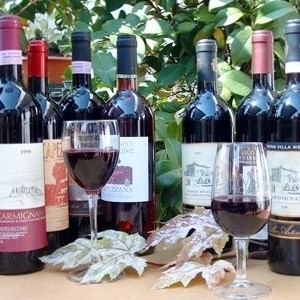 CARMIGNANO (PO) – countryside village
CARMIGNANO (PO) – countryside village
Located in the heart of Tuscany, Carmignano offers a range of attractions, from the Archaeological Park of Carmignano with the Necropolis of Prato Rosello and the Montefortinii Mound of Etruscan origins to historic villas and farms as the Villa Medici ” Ferdinanda “and Capezzana Farm. For art lovers, a visit to the Church of San Francesco and San Michele offers the opportunity to admire one of the most important works of the famous painter Pontormo – Visitation. The territory has a rich culinary tradition. In fact, in the hills that still maintain the typical Tuscan landscape, they are produced preggiati wines like Carmigiano DOCG and DOC Barco Reale, as well as extra virgin olive oil IGP Toscano, appreciated throughout the world. From Carmignano they depart several nature trails and hiking paths towards Montalbano (Monte Albano).
MONTEMURLO (PO) – nature village
(PO) – nature village
The town of Montemurlo is located halfway between the cities of Prato and Pistoia. The town includes many historic villas of the Renaissance period with picturesque gardens, open for visitors organized by the Ancient Gardens. The territory is also known for its quarries of serpentine rock green color used as a decorative material in churches and monuments, and which produce an interesting geological effect. The area is also a destination for Hiking Due to the large natural protected areas rich in biodiversity and beautiful landscapes.
VAIANO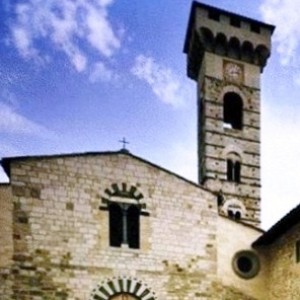 (PO) – hillside town
(PO) – hillside town
Il territorio di Vaiano è compreso tra due ampie aree protette, quella del Monteferrato e quella della Calvana. Il centro abitato si sviluppa al lungo della valle del fiume Bisenzio. In epoche passate, le acque del fiume furono sfruttate come energia idraulica per i mulini. Oggi, è una tranquilla località adeguata al turismo ecologico per la ricchezza di ecosistemi preservati e incontaminati.
VERNIO (PO) – cittadina in collina
The residential complex of Vernio takes place along River Bisenzio in a mostly mountainous area. The town stands out for its environmental sensitivity: hydroelectric turbines, photovoltaic systems and the new fountain that dispenses public water. They are part of the municipality typical small villages of the mountains as Montepiano , San Quirico and San’Ippolito rich in history and nature.
VALDINIEVOLE (province of Pistoia)
La Valdinievole is a spectacular natural environment and thermal waters belonging to the Province of Pistoia. With numerous streams that flow into the basin of the Marsh of Fucecchio, it offers the opportunity to enjoy a beautiful landscape. Throughout the area you can discover numerous alternative routes leading to castles and medieval villages. To report the known thermal spas of Montecatini Terme with many elegant spa facilities and Monsummano Terme with the famous Grotta Giusti, thermal site of international importance and Pescia with important religious building and charming hamlets to the point of being called the “Switzerland Pesciatina”. Also visit the village of Collodi where there is the Pinocchio Park, a theme park puppet loved by children.
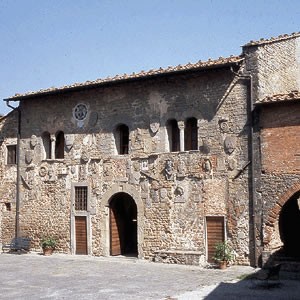 BUGGIANO (PT) – hillside village
BUGGIANO (PT) – hillside village
It is one of the oldest municipalities in the Valdinievole. The origin of the village is depicted in the municipal coat of arms with two “ox” that brings the legend of the origin of the town. Known for the cattle market and the breeding of silkworms, Buggiano today is a bustling town that centers its svuluppo in industrial production.
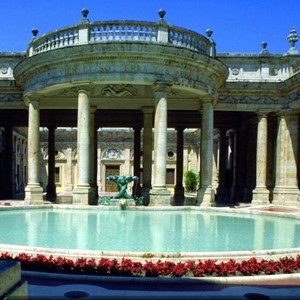 MONTECATINI TERME (PT) – medieval village and spa town
MONTECATINI TERME (PT) – medieval village and spa town
The resort is known for its rich thermal equipment divided in different establishments of elegant and refined appearance located between numerous art nouveau buildings, large parks and tree-lined avenues. Several high-level events, conference facilities and complementary equipment such as the golf course and the racecourse make Montecatini a holiday resort, not only thermal, but also cultural.
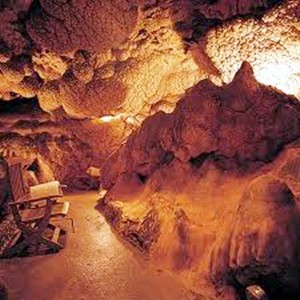 MONSUMMANO TERME (PT) – spa town
MONSUMMANO TERME (PT) – spa town
The town is dominated by the hill of Monsummano Alto, which stands isolated at the western edge of the Montalbano chain, dominant in the whole Valdinievole. Con specific natural caves, offers visitors a wide and autonomous choice of paths of art and culture, nature trips, for body care centers and sports activities. Stands the Grotta Giusti spa for excellence located in an area of natural beauty.
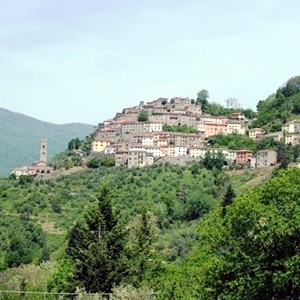 PESCIA (PT) – town and hilly medieval villages
PESCIA (PT) – town and hilly medieval villages
Considered the capital town of Valdinievole for the wealth of monuments and testimonies of all ages, the town is a major center of cultivation of flowers. Also, nearby, there is the small village of Collodi , made famous for the Pinocchio Park , with many of the characters of the sculptures fiabba puppet, that always enchants children. In the area it is also the ” Switzerland Pesciatina “, which offers a particular scenario consists of a tenth of hamlets, one near all’altri, perched in the hills and surroundings that keep preserved the original features Lori .
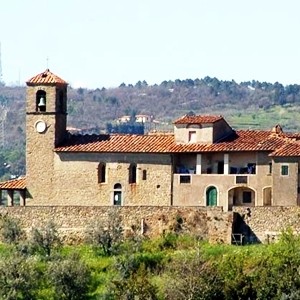 LAMPORECCHIO (PT) – countryside village
LAMPORECCHIO (PT) – countryside village
The village, formerly known for its handmade straw hats, now based its economy on the footwear industry, confectionery, construction, production of plastic materials and food. It comes from the territory Montalbano DOCG, the highest quality Chianti wine and extra virgin olive Montalbano, IGP Tuscan.
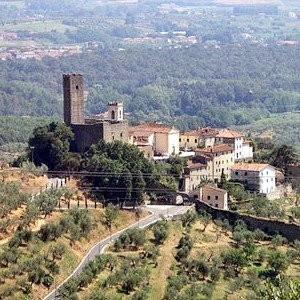 LARCIANO (PT) – countryside village
LARCIANO (PT) – countryside village
From the territory with activities mainly agricultural, in the last two decades they have instead developed handicraft production activities, in particular household, reaching importance internationally. Despite this transformation, it is nevertheless still important the presence of agriculture, whose key products are wine and oil. From Larciano start nature trails for Fucecchio.
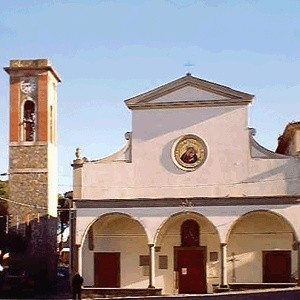 PONTE BUGGIANESE (PT) – countryside village
PONTE BUGGIANESE (PT) – countryside village
The history of the town is not very old because it lacks the typical medieval phase of the hilly villages of the area from which Ponte Buggianese takes its origin and name. The quiet village of the plain hides the story of hard work to tear the mud of the swamp to make farmland. For nature tourism is an interesting area of the Padule , in which they are possible excursions on foot or by boat, cycle tourism activities, horse riding or bird watching.
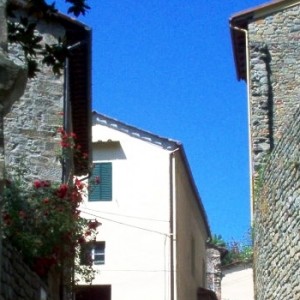 UZZANO (PT) – medieval village
UZZANO (PT) – medieval village
Uzzano is a small village located between Montecatini Terme and Pescia. Set on a hill covered with olive trees, the Uzzano Castle village overlooks the valley of the river Pescia and is visible from the whole Valdinievole. The village still retains the trim and the medieval architecture. It has a triangular urban layout, with the top mark from the ancient fortress and the Church of Saints Jacopo and Martino. Remain still and palaces of the 16th and 17th century buildings.
Surroundings Massa Carrara, Lucca and Pisa
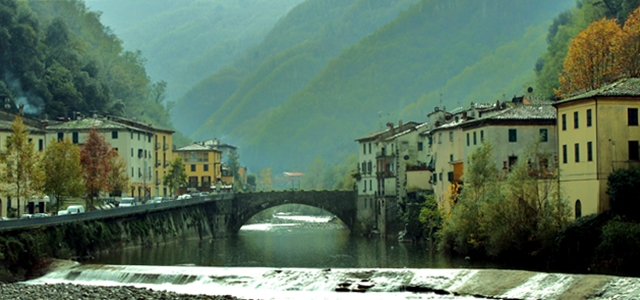 Bagni di Lucca – Garfagnana (LU)
Bagni di Lucca – Garfagnana (LU)
LUNIGIANA (province of Massa Carrara)
The Lunigiana area includes the border area between the regions of Tuscany, Liguria and Emilia Romagna. It is included on the slopes of the Apuan Alps, a mountain range angular, known for the beauty of marble and the centuries-old mining activity. The area is known for the beauty and richness of the environments and landscapes composed of deep abysses and large cavities results of a labyrinth of tunnels and shafts, as well as special karst caves with stalactites formation, stalagmites, columns and sails. The territory of the Lunigiana also presents testimony of the great religion in ancient times, due to the passage of the Via Francigena pilgrimage route leading to Rome, and that contributed to the construction of a large number of churches and Romanesque churches, abbeys and oratories. There are many opportunities to practice sport in Lunigiana. From bird watching to ski walking, caving and even from geotourism, canoeing, canyoning, rafting, mountain biking, Nordic walking and much more.
 AULLA (MS) – countryside village
AULLA (MS) – countryside village
It is the most important commercial and industrial center of Lunigiana, located on the border with the region of Liguria, and surrounded by hills dotted by villages. The historical events were influenced by the fact of always being a node between important roads. Fact is documented as one of the stages of the ancient Via Francigena (or Romea). The Aulla area is rich in cultural, natural and gastronomic, historical monuments as well as the centuries-old Abbey of San Caprasio and the imposing Brunella Fortress . Near Aulla, there are lovely small villages that still preserve the original medieval aspect as Caprigliola with the Medici walls, Bibola and Bigliolo with ruins of castles, Albian and Olivola with medieval houses and especially the medieval village of Pallerone . In these places you can also enjoy the authentic cuisine of the Lunigiana area.
 BAGNONE (MS) – hillside village
BAGNONE (MS) – hillside village
The village of Bagnone, which still boasts degrading rings to the valley floor, is located on a rocky outcrop, surrounded by a dense forest of pines and oaks. The territory has an essentially mountainous morphology, dominated by the Apennine ridge, which separates the Monte Sillara. The area is rich in historical sites such as the various castles like the Castle Trschietto and small hamlets around Bagnone such Corvarola. The territory is also crossed by the Bagnone stream forms small waterfalls and lakes where you can sport fishing with the fly and in the winter months the practice of kayaking.
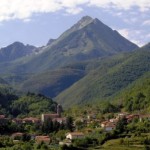 CASOLA IN LUNIGIANA (MS) – countryside village
CASOLA IN LUNIGIANA (MS) – countryside village
Casola is a hill town very well kept and charming, with palaces, portals and medieval and Renaissance workshops. The strategic location, close to the Apuan Alps Park, allows numerous naturalistic and spa paths. Nearby, you can admire works such as Parishes of Codiponte and Offiano , Pieve San Lorenzo and charming villages such as Regnano, Ugliancaldo and Castiglioncello . Casola is included in the Street Markets Medieval , an initiative that seeks to evoke the antique fairs and markets. During the year they are organized three exhibitions, a Casola and other nearby places of Codiponte and Equi. As to wine, deserves mention the Marocca Casola, a tasty chestnut flour bread that is eaten with cheese and lard.
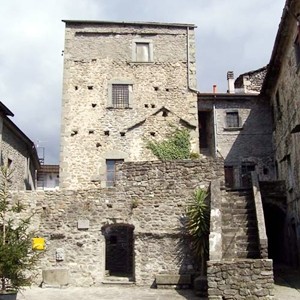 FILATTIERA (MS) – historic countryside village
FILATTIERA (MS) – historic countryside village
The village of Filattiera, was originally an ancient Byzantine fortress. In territory there are evidences of religious importance as the Romanesque church of Sorano. What’s Near Filattiera, there are other medieval towns, such as those of Ponticello and Caprio with houses-towers, in addition to nature areas with spectacular scenery as Rocca Sigillina, Lusignana and Prati Logarghena.
 FIVIZZANO (MS) – countryside village
FIVIZZANO (MS) – countryside village
Fivizzano has a municipal area among the largest of the Lunigiana. It has always been an important center, as evidenced by the large number of churches, castles and palaces in the city center. In the town was born Jacopo da Fivizzano who developed the printing process of movable type, stored in the Print Museum. In the municipal area there are other interesting settlements, as the fraction of Monzone with the Museum of Work, Gragnola with the Eagle’s Castle and the Equi Terme Caves Park . Inside the park there is the Museo delle Grotte which includes an underground karst with cavities, tunnels, rooms with four types of water (sulfur, salt, black, sweet). From Buca (entry), a well-equipped path leads to a succession of 9 caves , full of stalactites, stalagmites and all kinds of natural concretion. The tour ends along an underground lake.
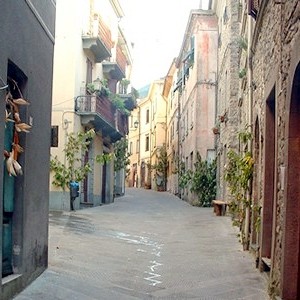 LICCIANA NARDI (MS) – countryside village
LICCIANA NARDI (MS) – countryside village
The town is located along the Taverone amid a flat area and with some mountain ranges. It ‘a typical example of an ancient hamlet built in the valley, with eminently military barrier functions. The set of fortifications comprises the fortress, a large ring of ramparts are still existing, and a fort across the river. The latter, called the Castello Plan, is an interesting example of military architecture, converted into residential structure in the sixteenth century. In the town hall square is the monument-ossuary Anacarsi Nardi, the Renaissance hero who gave the current name to the city. In the area there are also several castles: Bastia, Monti, Pontebosio, Terrarossa. Also the church of Venelia, the village of Panicale (with the Medici palace), Apella (with Nardi house) and the village of Tavernelle with its old shops of merchants.
 MULAZZO (MS) – hillside village
MULAZZO (MS) – hillside village
Mulazzo is a village that is located in the high course of the Magra. Seat of an ancient Ligurian village-castle and another castle of which only the so-called tower of Dante, in Mulazzo you can also admire the ancient arches of the Malaspina and Dante square, dominated by the church of St. Nicholas and the Malaspina Palace Zini. The territory is dotted with castles and fortified villages: Montereggio , venue of the book fair, the village of Castevoli, the Castle Lusuolo , site of the Museum of Emigration , the castle of Gavedo, Canossa, Campoli and Castagnetoli, known for the production of a typical kitchen tool of Lunigiana.
 PODENZANA (MS) – countryside village
PODENZANA (MS) – countryside village
Despite its small size, the Podenzana municipality was one of the most characteristic of Lunigiana. The territory, mainly hilly, is very suitable for cultivation of vines, olive and apple “binotto”, local product. A substantial part of the economy is represented by the linked tourism and the local gastronomy. Curious is the presence of numerous and significant the “majesty” in the territory of Podenzana. These small artistic jewels are kiosks with marble bas-reliefs and stone placed by the wealthiest families at crossroads, generally dedicated to Our Lady.
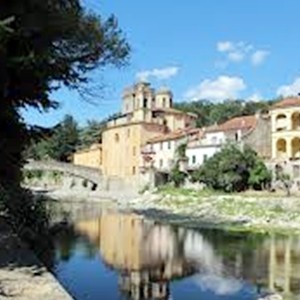 PONTREMOLI (MS) – countryside medical village
PONTREMOLI (MS) – countryside medical village
Located in the valley of the river Magra, the village of Pontremoli is located on one of the oldest streets of connection between Liguria and Tuscany. The name is derived, probably, from Pons Tremulus, to indicate the poplar used in the construction of the first bridge or, perhaps, even by the flickering due to the flexibility of this type of wood. Pontremoli retains many vestiges of its important role in the past: in the old town you can still admire the ancient medieval bridges, tower houses and fortifications, but also refined religious buildings of the Baroque period. Pontremoli is also known as “City of Books.” The link between the town and the printed paper goes back to 1458, when, even two years from the invention of printing, here is historically attested to a mercatum tomorum (the book market). It is precisely from the great tradition of the local booksellers who was born in 1952, the prestigious literary prize “Stall”.
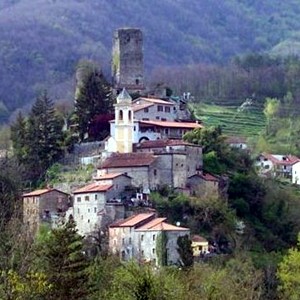 TRESANA (MS) – countryside village
TRESANA (MS) – countryside village
The hamlet of Tresana is perched on a hill, surrounded by green forests of chestnut trees. Dominates the village the ruins of the quadrangular tower and the trunks of two smaller towers that were part of the original castle. Castle Villa of Tresana, completely restored is one of the attraction of the area. The surrounding landscape is characterized by many trails and scenic roads, over the streams Peno and Osca, whose waters are exploited for irrigation of cultivated fields of vegetables. Tresana around, there are many other lovely little villages like Barbarasco, Groppo, Giovagallo, where you can still see the ruins of the old church and the old castle, and Villa Noveggiola.
 VILLAFRANCA IN LUNIGIANA (MS) – nature medieval village
VILLAFRANCA IN LUNIGIANA (MS) – nature medieval village
The village of Villafranca has developed along the road of Mount Bardone, the medieval route of the Via Francigena. The municipality includes some interesting historical villages and centers for urban layout which fillet, Fornoli, Irola, Virgoletta. From report Malnido Castle and the Castle of Malgrate.
GARFAGNANA (province of Lucca)
The Garfagnana is a valley formed by the river Serchio and its tributaries, enclosed between the mountain ranges of the Alps and Apennine Tosco-Emiliano in the Province of Lucca. The area offers a wide variety of landscapes, rich in meadows and cultivated fields with outstanding natural beauty, just to be a paradise for hikers. Routes can be made on foot, horseback or mountain bike. There are complex of caves can be visited easily, which stands out Cave of the Winds. Inside the Orecchiella Park is the sanctuary-hermitage cave Calomini built overlooking the valley of Turrite, where you can also stay. In the Garfagnana area there is a wide offer of hotels, cottages, houses, b & amp; b with diversified tourist services ranging from car rentals, airport reservations, interactive maps and travel guides. There are numerous resources for recreation, leisure, hobbies and sports such as adventure parks, riding stables, horse pensions.
 BAGNI DI LUCCA (LU) – nature spa village
BAGNI DI LUCCA (LU) – nature spa village
Located on the Tuscan side of the Apennines, and washed by the Lima River, the town is an oasis of peace and serenity. The hot spring was exploited since Roman times, to become one of the largest spas in Europe. In the nineteenth century Bagni di Lucca was also known as the “Switzerland of Tuscany”. The territory includes natural areas of great interest such as Ravine Botri , karst canyon excursion destination, and Monte Prato Fiorito, a charming mountain dotted with Romanesque churches and medieval structures. Bagni di Lucca offers many opportunities to practice sports. The pools inside with thermal water, include a great Olympic pool, one for children and one for diving. The torrent Lima, which descends from the mountains of Pistoia, is very suitable for the fishing . Also in its waters they are practiced rafting and canoe . For the more experienced and prepared the river offers the possibility of an exciting raft ride . Enthusiasts trekking , mountain bike , riding have available suitable trails, all marked. The top of Mount Prato Fiorito is ideal for paragliding . There are also excursions offered in Moto Quad.
 CAMPORGIANO (LU) – countryside village
CAMPORGIANO (LU) – countryside village
Camporgiano is located in the upper Serchio valley, flanked by mountain ranges of the Apuan Alps and the Apennines. The landscape is typical of the high hill: thick forests of chestnut trees, vast meadows and agricultural land, mainly cultivated with farro. In the historic center of Camporgiano is the ancient fortress built on top of a cliff that falls sheer to the river Serchio.
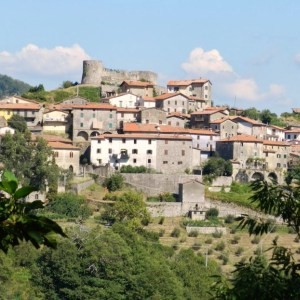 GALLICANO (LU) – hillside village
GALLICANO (LU) – hillside village
The historic center of the town is perched on arouses the Turrite, where stands the church of San Jacopo, a true work of art of the Romanesque architecture. Also it signals the Town Hall, under whose porch is a Della Robbia pottery round depicting the Madonna and Child . Also significant is the public source of Via Cavour, also with Della Robbia decorations. Gallicano is an active a craft and industrial center, home to many shops and a busy commercial center.

PIAZZA AL SERCHIO (LU) – hillside village
Located on one of the large cones of volcanic material (doglioni) emerging from the bed of the river Serchio, it is a village located in an area rich in history and traditions and surrounded by a pleasant view. Many roads provides easy access to some of the most beautiful mountains and passes of the Apennines. In addition there are many trails that allow hiking, horseback and especially mountain biking. In the municipal area there are ancient villages scattered along the slopes of the mountains, which have maintained their centuries architectural appearance. Among the most attractive there are Borsigliana , with the Romanesque church of Santa Maria Assunta, Gragnana , where the ruins of the castle are still visible, Nicciano, once an important defensive stronghold , Petrognano, where are the ruins of ancient fortresses, room , the oldest of all the villages in the area, and San Michele , with the fourteenth century bridge. It is an area that still seems was frozen in time, everywhere surrounded by the lush landscape of the Garfagnana.
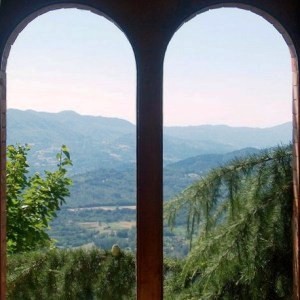 PIEVE FOSCIANA (LU) – historic village
PIEVE FOSCIANA (LU) – historic village
It named after the ancient church of the VIII century around which developed the village core with its narrow streets lined with old stone houses. The district extends from the western slopes of the Apennines to the valley of the river Serchio and also includes two very attractive villages. The first is Pontecosi, where the particular medieval bridge, called the Ponte Madonna. The other is Silico where are the ruins of an ancient tower.
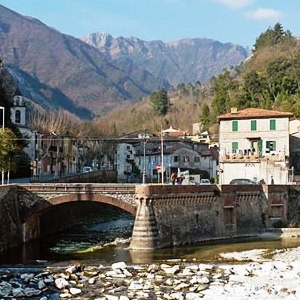 SERAVEZZA (LU) – countryside village
SERAVEZZA (LU) – countryside village
Seravezza ha una morfologia piuttosto varia: nella parte orientale ci sono le pendici delle Alpi Apuane, in quella occidentale si trova la zona pedemontana. Il villaggio è ubicato in una piccola valle percorsa da due torrenti, il Serra ed il Vezza, entrambi provenienti dalle Alpi Apuane. Nel centro abitato spicca l’imponente Villa Medicea, sede di importantiSeravezza has a morphology quite varied: in the east there are the slopes of the Apuan Alps, in the west lies the piedmont area. The village is located in a small valley crossed by two streams, the Serra and Vezza, both coming from the Apuan Alps. In the town stands the imposing Villa Medici , where important art exhibitions. mostre d’arte.
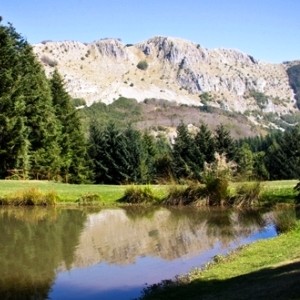 SILLANO (comune di Sillano Giucugnano – LU) – countryside village
SILLANO (comune di Sillano Giucugnano – LU) – countryside village
Located on the border between Tuscany and Emilia, Sillano is located near the top of the mountain Prado, with its 2054 m s.l.m., it is the highest peak of Tuscany. The territory is surrounded by chestnut trees known for the production of “chestnut flour”, comprises a series of attractive small rural villages. To signal the villages of Capanne di Sillano , Giucugnano, Villa Soaggio and Caporanda that have preserved the ancient traditions associated pastoralism, and are situated in an area remained almost intact from an environmental point of view. The district includes a small part of the Orecchiella . The economy is based on the production of cereals, on farming and on the exploitation of forests. To see the Plateau dell’Argegna and the Madonna della Guardia Sanctuary.
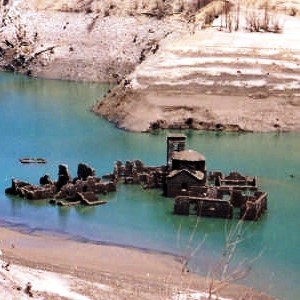 VAGLI DI SOTTO (LU) – countryside village
VAGLI DI SOTTO (LU) – countryside village
It is a very picturesque area, surrounded by the Edron torrent and full of lush forests, where there are two towns “twins.” Screeners di Sotto, perched on a promontory overlooking the lake Screeners. Not far there Screeners di Sopra. Nearby there is an artificial lake that has a certain notoriety because the water flooded the village Careggine , visible only when the reservoir is emptied. Today, the screeners economy is mainly based on the cultivation of cereals, fruits, vegetables, breeding sheep and some mining activities. The area is the source point for many nature trails including one to the hermitage of S. Viviano, a chapel carved into the rock and that of the Marble Cave.
 VERGEMOLI (municipality of Fabbriche di Vergemoli – LU) – countryside village
VERGEMOLI (municipality of Fabbriche di Vergemoli – LU) – countryside village
The territory of Vergemoli is dominated by two imposing Apennine Mountains, the Pania della Croce and Pania Secca. It is one of the most beautiful corners of the Garfagnana. The whole area is rich in water which, in the past, provided the energy for the mill of the many mills and the hammers of ironworks. Currently the numerous streams feeding the lake Trombacco and Polla hinges. There are many fish farms that exploit the abundance of water. Among the major attractions of the area is the famous Cave of the Wind , one of the most famous natural caves in Europe, part of the Regional Natural Park of the Apuan Alps. Of note is the ‘ Hermitage Calomini , an unusual example of a building adjoining the living rock and the unusual Forato .
 VILLA COLLEMANDINA (LU) – historic village
VILLA COLLEMANDINA (LU) – historic village
The small town of Villa Collemandina is located in the high Garfagnana, in an area of archaeological importance. In the territory there are indeed many caves where they were identified traces of prehistoric settlements is that the populations settled in the area in subsequent periods. The War Cave, the Cave Raffaelli, the Cave of the Yellow Pen and the Cave of the Boar are the most important sites.
VALDERA (province of Pisa)
The Valley of Era area offers nice paths along the river Era. The trails wind through a series of streams, forests and vast campaigns characterized by a varied vegetation of cypress, poplar and brooms. The variety of landscapes makes it possible to satisfy fans of various sports such as mountain biking, and horseback riding. The area is crossed by Route of Coline Pisan wine along which are cellars where you can taste and buy excellent wines. There are many farms that offer valuable services.
 CAPANNOLI (PI) – rural farming village
CAPANNOLI (PI) – rural farming village
Capannoli is a small town nestled in the green countryside of Pisa locates in the area called Valdera (Val d’Era). The local economy is mainly based on wine production and livestock farming, as well as on the production of furniture for furniture. Interesting to visit is the Villa Bourbon del Monte-Baciocchi and Zoological Museum .
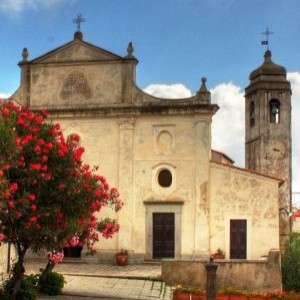 CASCIANA TERME LARI (PI) – spa and medieval hill town village
CASCIANA TERME LARI (PI) – spa and medieval hill town village
Casciana Terme was a separate municipality until 1 January 2014 when it merged with Lari to form the new municipality of Casciana Lari . The town is best known for spas luxury benefiting the sulphurous waters that flow in a 37 ° C constant area. Already Lari is a charming village which offers a beautiful panoramic view of the valley of the river Era. The settlement is known for the production of cherries and peaches. In fact, in April, the land around the village are the colors of white flowers of cherries that give a spectacular view of the area. The old town still retains its medieval appearance and is the main attraction as the Castello dei Vicari where they staged exhibitions and cultural events.
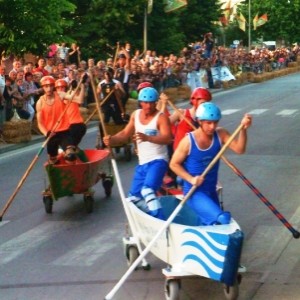 CASTELFRANCO DI SOTTO (PI) – countryside village
CASTELFRANCO DI SOTTO (PI) – countryside village
The territory of Castelfranco di Sotto is characterized by a hilly landscape. The town à internationally known for the event “ Festival of the cream puffs ” where confectioners established themselves internationally part of the race “Dolcione”. It is a challenge between real sculptures of large (really the Guinness book) constructed using four basic components: sugar, butter, eggs and flour. At the end of the competition sweets giants, depicting important historical monuments, parade of floats through the streets of the village and its surroundings. Another feature of Castelfranco di Sotto is the ” Palio of small boats with route ” moved by rowers, a really fun race.
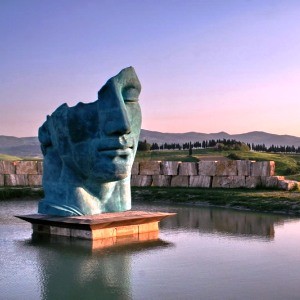 LAJATICO (PI) – countryside village
LAJATICO (PI) – countryside village
In the town coat of arms it is written: “Everything lives Everything dies.” The town is localized between the river valley and the stream Sterza It was, in one of the most beautiful area as the landscape and environmental quality. Nearby there are several farms among them being the historic villa Spedaletto . Andrea Bocelli, the famous Italian opera singer, properly born in Lajatico, dedicated a beautiful poem to the town: “… This is my land. A land that, like me, loves silence … “
 PALAIA (PI) – hillside medieval village
PALAIA (PI) – hillside medieval village
The territory is characterized by the cultivation of vines, olive and fruit trees. The exploitation of agricultural resources is still the major source of support for the inhabitants of the territory. More recently it has added the accommodation business, as confirmed by the large number of farms located throughout the area exploiting the beautiful landscape that surrounds the village. The town retains traces of the medieval past still present in the architectural elements of buildings.
 PECCIOLI (PI) – hillside medieval village
PECCIOLI (PI) – hillside medieval village
The village has a topography with a central square and the church in the Romanesque style of Pisa. Peccioli is characterized by narrow streets and typical streets steep (lanes) of the medieval villages. Nearby was made Dinosaur Park, the first amusement park in Tuscany with reconstruction of life-size dinosaurs made of fiberglass.
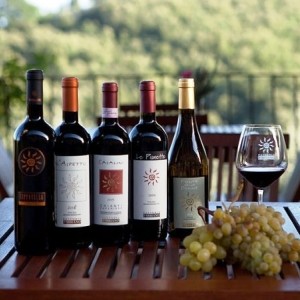 TERRICIOLA (PI) – villaggio di campagna
TERRICIOLA (PI) – villaggio di campagna
L’aspetto attuale del villaggio conserva evidenti tracce del periodo medievale, con particolare riferimento agli stretti vicoli che separano le costruzioni. Inoltre le gallerie scavate nel tufo, alcune addirittura di epoca etrusca, rappresentano una peculiarità della cittadina e sono attualmente conosciute come “Antiche Cantine”.
Surroundings Grosseto and Livorno
![]() Colline Metallifere (GR)
Colline Metallifere (GR)
AMIATA (province of Grosseto)
The territory of Monte Amiata is rich in waters with presence of rocky, volcanic lakes and forests consist of beech, fir and chestnut. Important, currently is the production of electric energy with the use of geothermal steam emissions of Piancastagnaio and Bagnore area, coming from the soil. On the slopes of Mount Amiata are many villages and towns rich in art and history.
The Amiata is crossed by a network of marked trails and equipped for trekking on foot, horseback or mountain bike. Many are the activities that can be done in the area how to cross streams, visit the caves, the Amiata Fauna Park and the Mineral Park of Amiata. Of great cultural interest are the paths of the chestnut which travel through some of the most evocative chestnut volcano touching farmhouses and squeegees, evidence of past practice of dry chestnuts. To further enhance this product has also set up a path through the entire Monte Amiata, called Road of the chestnut.
 CINIGIANO (GR) – hilly farming village
CINIGIANO (GR) – hilly farming village
The territory covers a hilly area overlooking the Ombrone Valley one hand, and the final part of the Val d’Orcia on the other. The town has agricultural vocation, but recently has had an enlargement of tourism, mainly tourists came from Germany and Switzerland. The area is also known for its wine production of quality represented by the DOCG Montecucco brand that includes various farms that form the Strada del Vino Montecucco. They are offered to the tourists, guided tours of the farm with wine tasting and local products. Nearby there are villages that still maintain the original medieval architecture such as Porrona villages and Montiecello Amiata. There are also castles that have had an impotant role in history as the Castello di Vicarello and Colle Massari and Tenuta Monte Cucco that are now prestigious farms.
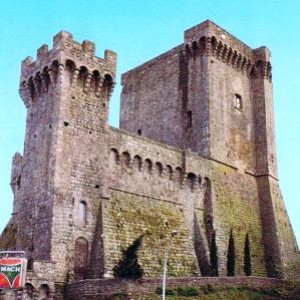 PIANCASTAGNAIO (SI) – rural village
PIANCASTAGNAIO (SI) – rural village
The town is located on the eastern side of Mount Amiata. The historic center, circular, spread like a fan and is intersected by medieval alleys. Here and there there are churches and fountains. From the town originate various trails that allow you to make excursions to Mount Amiata and the Natural Reserve of Pigelleto. Piancastagnaio is part of the National Park Museum dell’Amiata Mines because in its territory, to be exact in the village gates, was extracted cinnabar (mercury).
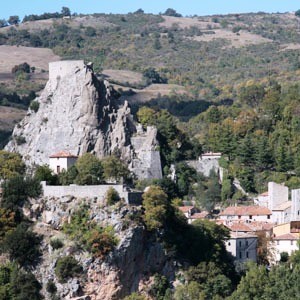 ROCCALBEGNA (GR) – hillside village
ROCCALBEGNA (GR) – hillside village
The village is located in the upper Albegna river valley, at the foot of two steep and picturesque cliffs, one higher than the other, on each of which it stands a fortress, the Rocca aldobrandesca and Cassero Senese. This particular topography comes the popular saying “if Sasso Scrocca, farewell the Rock”. The village is a maze of streets and alleys lined with small buildings, including an important Romanesque church. Also two buildings the great value, what Bichi Ruspoli and that of Lana.
SEGGIANO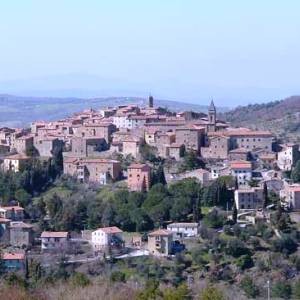 (GR) – medieval farming village
(GR) – medieval farming village
The town, located on a hillock surrounded by olive and chestnut trees, half way between the top of Monte Amiata and the valley of the river Orcia, has retained its medieval appearance and preserved rural origins. There are still three antique doors and large part of the walls of the tenth century, which contained all the inhabited nucleus. In the area there are small villages placed in a wooded area where there are also old houses, some of which turned into comfortable cottages. To mention Pescina, whose main attraction are the restaurants where you can taste the local culinary specialties. From the peak of Amiata opens skiable area; also many trails for hiking and trekking.
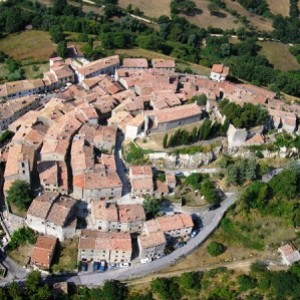 SEMPRONIANO (GR) – hillside village
SEMPRONIANO (GR) – hillside village
Between the slopes of Mount Amiata and the Maremma, the whole area is pretty quiet, characterized by a striking landscape of pleasant hills and sweeping views over the valleys of Fiora and Albegna rivers. Semproniano looks like a small village with a historic center, well preserved over time, with quaint narrow streets, old stone houses and travertine balconies. The territory is rich in small villages situated among olive groves.
COLLINE METALLIFERE (provinces of Grosseto and Livorno)
The Colline Metallifere (Metalliferous Hills) are stretching between the provinces of Livorno, Pisa, Siena and Grosseto. The landscape of the Metalliferous Hills offers visitors wild landscapes and unique color resulting from the presence of minerals in the subsoil. Today mainly exploit the geysers, which produce geothermal energy. Most important is the area called the Valley of the Devil, which offers truly unique scenery, covered with geysers and “lagoons”, small cavities filled with water where to flow natural gas. At the center of the Devil’s Valley, in the village of Larderello, there is a large geothermal power plant that collects and distributes the vapors from the soil. Beyond the territory of the Metalliferous Hills includes a city considered Tuscan architectural jewels – Massa Marittima, an excellent example of urban medieval age surrounded by important remains of the Etruscan period.
 CASTELNUOVO DI VAL DI CECINA (PI) – medieval village
CASTELNUOVO DI VAL DI CECINA (PI) – medieval village
Castelnuovo di Val di Cecina is a charming village that has preserved the architectural homogeneity of the medieval period: the typical urban layout of the castle and its village, the original entrance gates, the narrow streets and winding cobbled stone, the wide views over the Cecina River valley. The area includes some picturesque villages, all of medieval origin: Montecastelli Pisano, La Leccia, Sasso Pisano.
 CAMPIGLIA MARITTIMA (LI) – wine-countryside town
CAMPIGLIA MARITTIMA (LI) – wine-countryside town
The district comprises two distinct urban areas: Campiglia, the capital, and Venturina. The surrounding countryside is rich in farms that produce wine, honey, fruit and vegetables. From the hills, inserted in the path of the Wine Road Etruscan Coast, you will enjoy a beautiful view on ‘Tuscan Archipelago, and when visible, on the northern tip of Corsica. In the vicinity lies the Archaeological Park of San Silvestro, with path within the mining tunnels of Lanzi-Sharpener through a mining train the spas of Venturina with pond and hot spring.
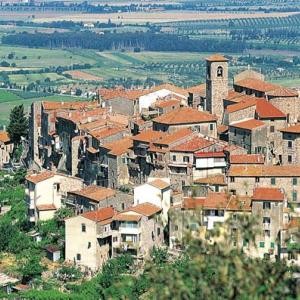 GAVORRANO (GR) – rural mining town
GAVORRANO (GR) – rural mining town
The town is located on the northern slope of Mount d’Alma, a soil relatively rich in minerals, especially large deposits of pyrite, intensively exploited until the 80’s. The town was an important center of mining that still has the stone quarries and infrastructure for the excavation and processing of pirita. Nearby there are charming villages, forests of oak, chestnut, Etruscan tombs and old mines placed in the paths of Naturalistic Mining Park of Gavorrano. Numerous pyrite extraction wells, are no longer functional today, they can be visited as Pozzo Empire, Pozzo Roma, Rigoloccio and others. Of particular interest is the Theatre of the Rocks in the San Rocco quarry, mine Ravi Marchi, the Church of San Giuliano with works by the Sienese sculptor Giovanni d’Agostino and Documentation Centre conversing artifacts from the excavations on the ruins del Castel di Pietra.
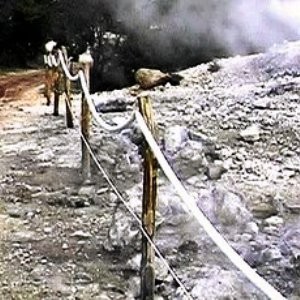 MONTEROTONDO MARITTIMO (GR)– geothermal town
MONTEROTONDO MARITTIMO (GR)– geothermal town
The area has as main feature the natural phenomena of geysers leaking from underground. For some time the geothermal industry was able to take advantage of the shower heads for the production of electricity and for heating homes. The presence of boric acid in the sulphurous waters of Lake Cerchiaio such fame and notoriety to the city, once the boron was abundantly used to treat skin diseases. Nearby there are still ruins of the Lombard period thermal structures called “Terme del Re Porsenna” (King Porsenna Baths). The village is surrounded by greenery, represented by deciduous forests and chestnut. To note the mining castle Cugnano and the sanctuary of the Madonna of Frassine, a pilgrimage site.
 MONTEVERDE MARITTIMO (PI) -mountain village
MONTEVERDE MARITTIMO (PI) -mountain village
The name reflects the landscape and scenic appearance of the area, characterized by an extremely bumpy mountainous morphology while providing ample panoramic views. The area contains the remains of Roman settlements, but the origins lie in the foundation of the abbey of St. Peter in Palazzuolo, which occurred in 754, which still preserves the original structure.
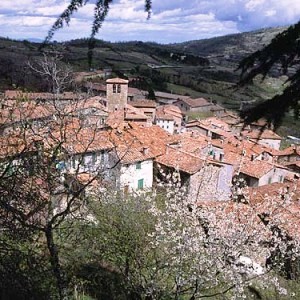 MONTIERI (GR)– mining town
MONTIERI (GR)– mining town
The wealth of mineral deposits – copper, iron, lead and silver – has profoundly influenced the history of the territory. In fact, the place name comes from the Latin mons aeris, meaning “mountain of copper,” in reference to the presence of metal in the area. The use of subsoil for a long time has profoundly changed the landscape, but still today the territory has maintained a balanced mix of forests, streams, mines and foundries. Today, the mineral resources are exploited geothermal, located near the town of Travale.
 POMARANCE (PI) – geothermal village
POMARANCE (PI) – geothermal village
The town has a history of many centuries, as evidenced by the Etruscan and Roman remains found during several archaeological excavations. The original name of the designation was Ripomarrancia, fusion of worda and the Roman name Arranciae. Exploitation of geothermal energy provided by geysers favored, in recent times, the economic development and socio-cultural territory. To visit the town of Larderello, where you can observe near the exit of the vapors of the subsurface.
 SASSETTA (LI) – spa town
SASSETTA (LI) – spa town
Sassetta is a small town with traditions mainly related to the collection of chestnuts and to the wood crafts, such as coal miners and lumberjacks. In the Museo del Bosco (museum) set up inside the Parco Poggio Neri can learn about the facilities and the working tools of these ancient crafts. Nearby there are thermal springs that feed the demand for welfare establishments.
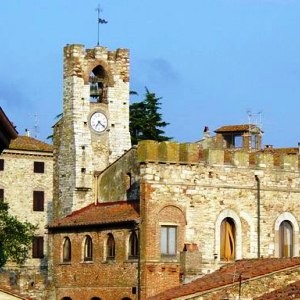 SUVERETO (LI) – Countryside medieval village
SUVERETO (LI) – Countryside medieval village
The territory rich in cork oaks, olive trees and vines, reflects a local economy, traditionally based on agriculture, forestry and livestock, even today on crafts and tourism. In particular, the forests of cork trees, with aromatic and varied Mediterranean vegetation, give the landscape a unique imprint. The town is home to major wineries DOC Val di Cornia, and is a member of the City of Wine. It was included among the most beautiful towns in Italy. Since signals the interesting Museo delle Bambole (Museum of Dolls) preserving specimens of historical and artistic importance.
MAREMMA (provinces of Grosseto and Livorno)
The Maremma is a fairly vast area between Tuscany and Lazio. Tuscany is from the coastline of the provinces of Livorno and Grosseto. Varied landscape, hills, mountains covered with dense vegetation are the salient features of somatic Maremma. And still clear sea, sandy coast, isolated coves, crowned by two rocky points Punta Ala and Argentario. Coveted by tourists, the Maremma includes numerous protected natural areas and many itineraries and routes both on land and at sea. One of the main attractions of the area is the Maremma Regional Park, with 13 nature reserves. Cowboys and oxen with long horns, wild horses are the typical in Maremma. Water birds in the wild are other scenarios that can be observed only in Maremma. There are also spas such as Terme di Saturnia and Terme di Petriolo over the important nature reserve wetland Diaccia Botrona located near Castiglione della Pescaia.
BOLGHERI (municipality of Castagneto Carducci – LI) –  town natural village
town natural village
Ancient village of Maremma which can be reached along the cypress avenue, a straight road, almost five kilometers long, flanked by dense centuries-old cypress trees that starts just in front of the Oratory of San Guido, located on the Via Aurelia (SS1), and salt. The village is accessed through a single arched door. The old town still retains its old original urban structure, characterized by an articulation of concentric streets. Frequently the historical architecture, old factories and curious workshops. Nearby is an animal “sanctuary of Bolgheri Oasis” located in a beautiful wetland area populated by thousands of water birds. Also deer, ducks and ospreys living in both the pine forest in swampy that can be observed from an observation tower from which you can admire the entire swamp.
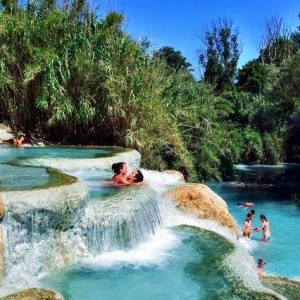 MANCIANO (GR) – medieval village
MANCIANO (GR) – medieval village
Perched on top of a hill and defended by solid walls, the town dominates the course of Albegna and Fiora rivers. In excellent location for sightings, Manciano was of great importance as an observation point to the point of being called “Maremma spy.” The walls that encompass the town, consisted of numerous towers. 11 of the tower, there are only two visible, while the others have been incorporated in buildings. The territory includes the Terme di Saturnia, with spa facilities with great flow of tourists, besides numerous archaeological sites of the Etruscan and Roman periods, including Pian di Palma and the Necropolis of Banditella. In the area there are forts and castles that still defy time and Medieval villages such as Montemerano. The village economy is based largely on agriculture, mainly producing cereals, wine, olive oil, cheese.


